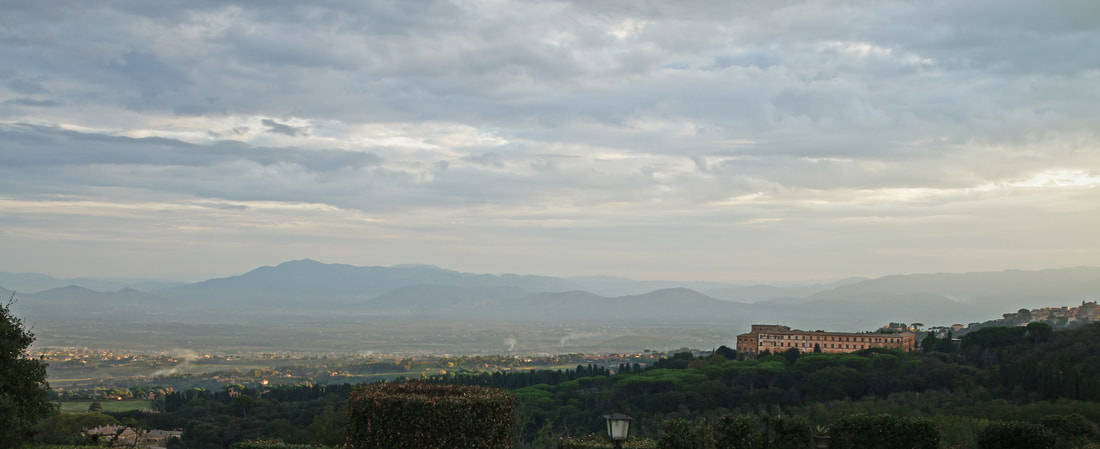
The next morning Christina Thompson and Heather took us to Ninfa, where we were fortunate enough to be guided round by Stella Marchetti, whose husband Lauro is curator of the gardens.
Ninfa was begun in the 1920s by Gelasio Catani in the site of a substantial village abandoned since the 15th century. From these gently decaying buildings two generations of the family created a magical garden against the background of a sheltering escarpment, the source of the water that is so central to the success of Ninfa. The family planted trees and shrubs that have grown hugely in such favourable conditions.
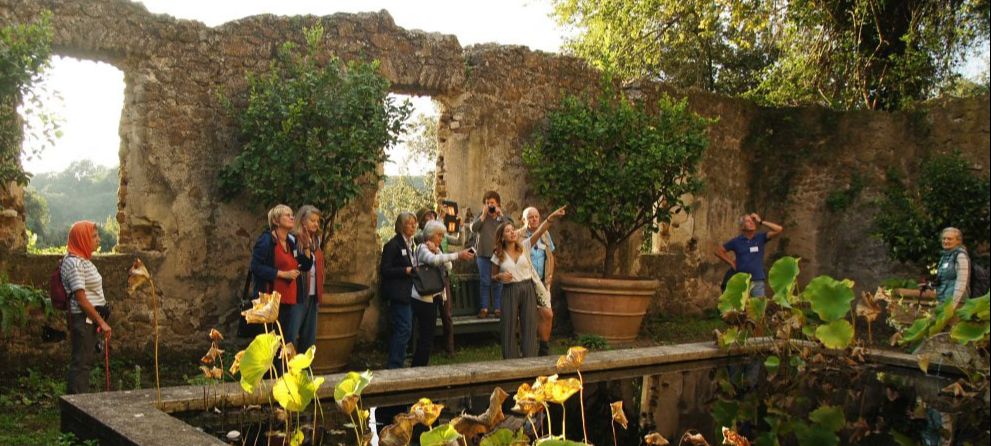
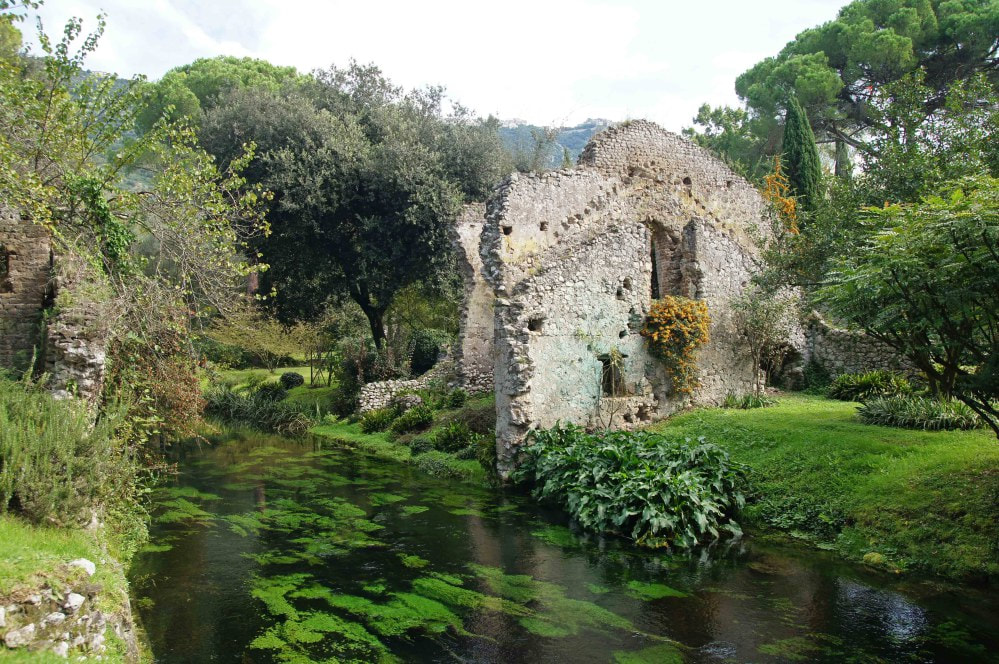
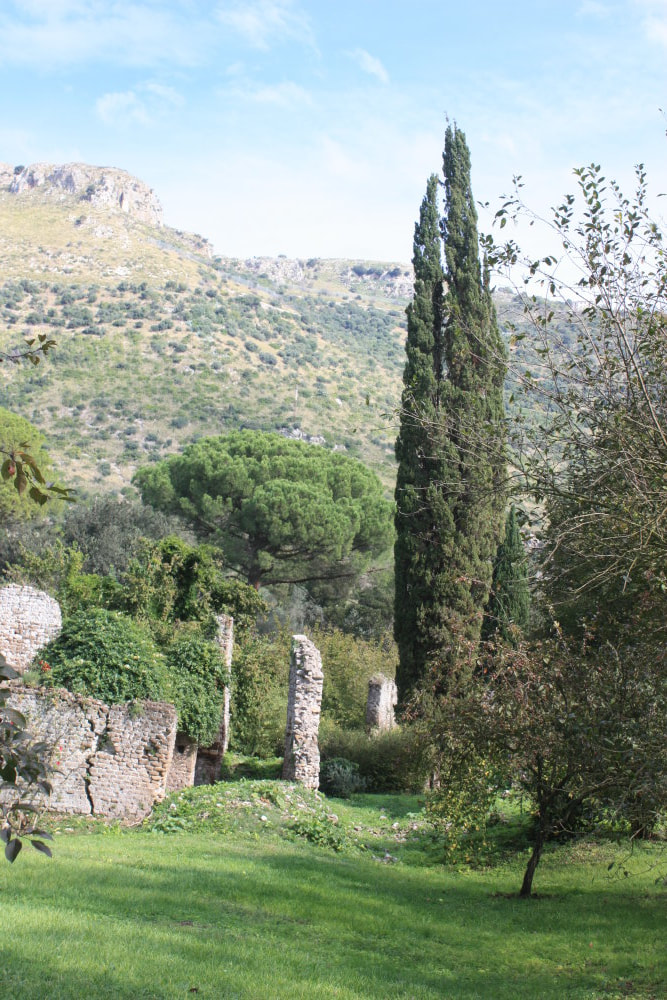
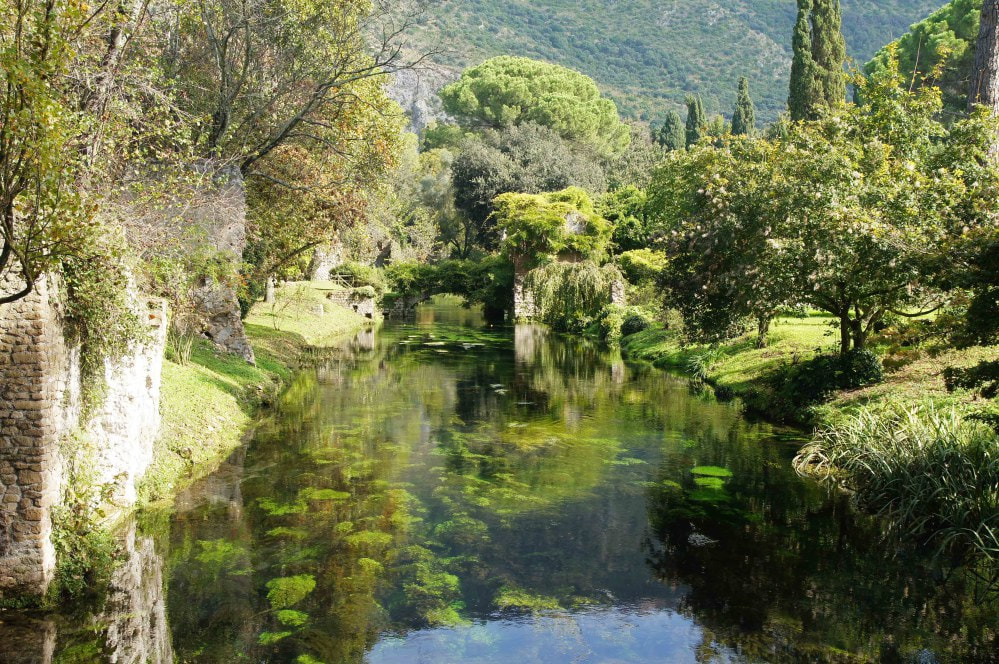
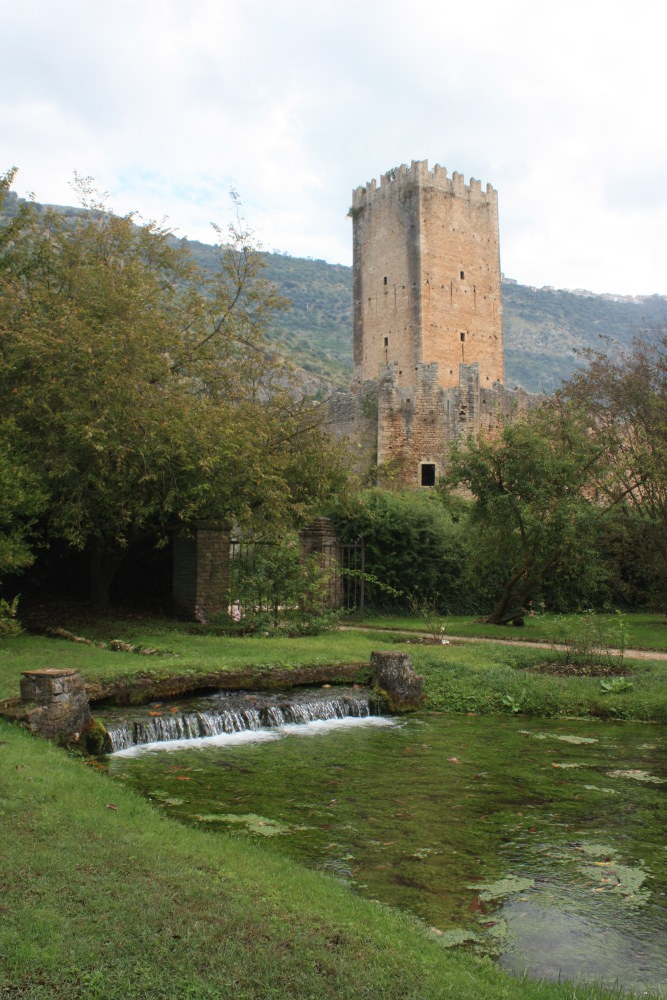
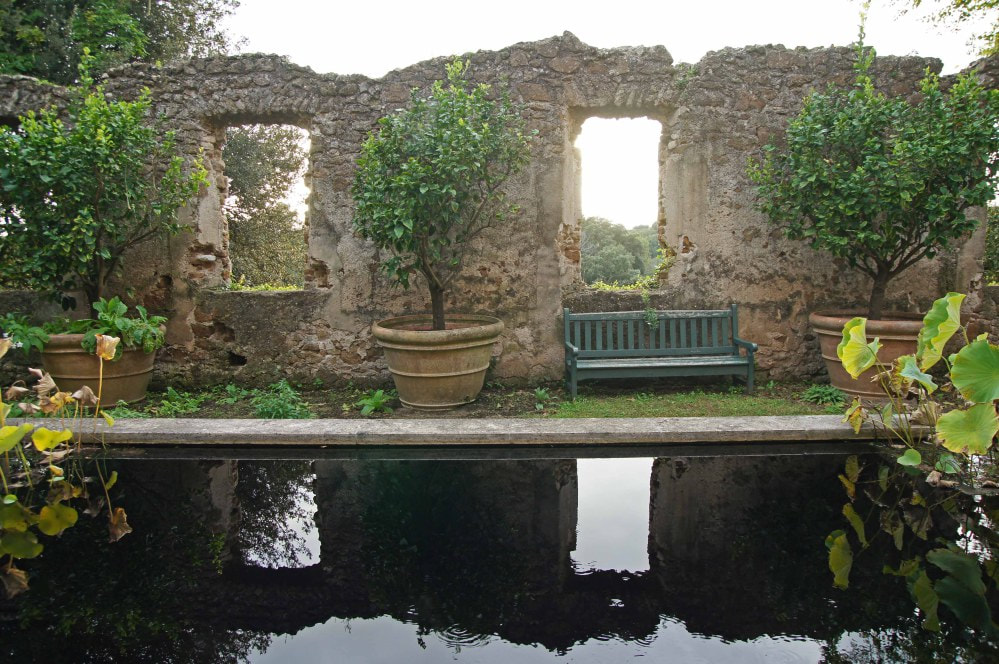
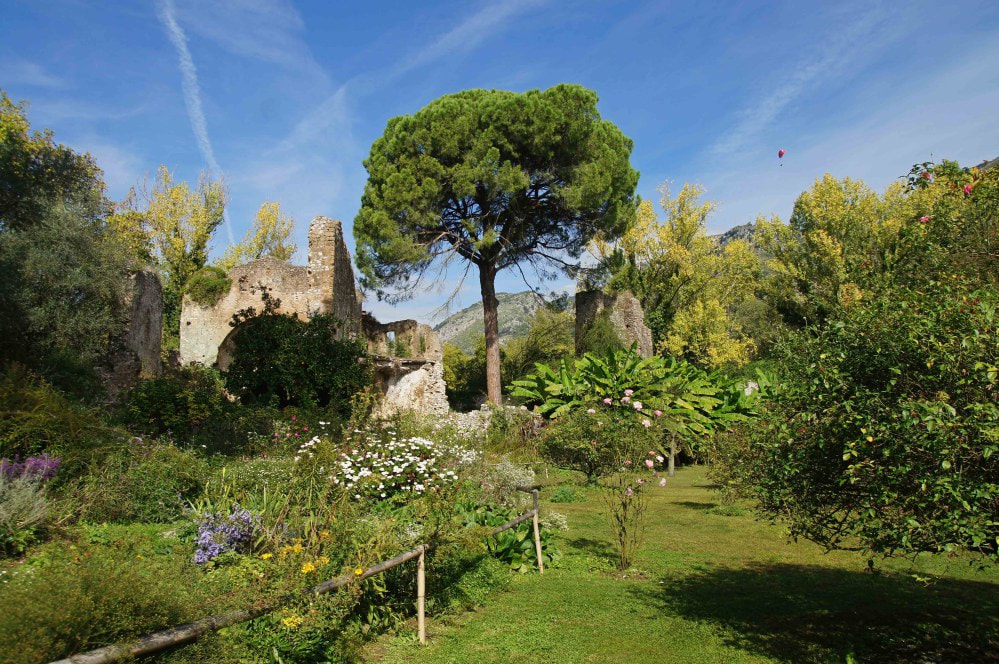
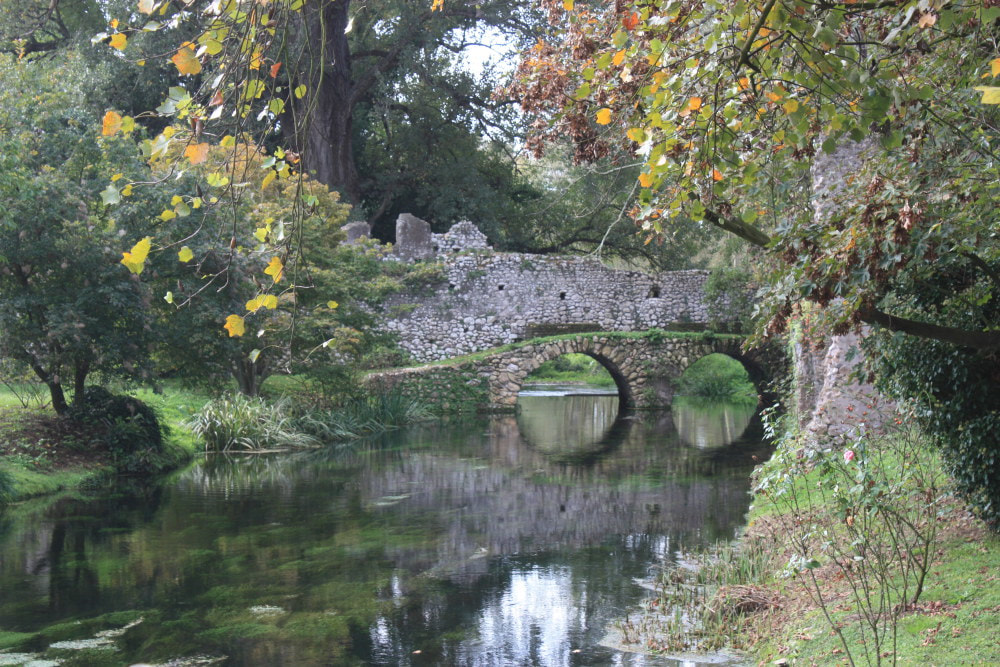
Visitors are welcomed in past a grove of Juglans nigra, fruiting in the autumn, towards a pomegranate walk, a vast copper beech and Parrotia persica, moving past a grove of Japanese cherries, magnolias, especially campbellii, and camellias, all coddled by the unusual microclimate of the gardens. Everywhere there were climbers scrambling up the trees, Bignonia and roses such as ‘Madame Alfred Carrière’ and ‘Kiftsgate’ (one, a vast specimen planted in 1945), a number still flowering in October, including many large specimens of Rosa ‘Mutabilis’. The exotic is artfully juxtaposed with the commonplace: around one corner is a grove of bananas beneath a soaring stone pine. The whole is a considered blending of art with nature to create a magical effect. Stella told us that the site is cultivated organically and is now listed as a national natural monument, a haven for butterflies and birds, including the owls that prey on vermin. All this is maintained by five gardeners, who can be seen bicycling around the eight hectares they care for.
The afternoon visit was to the Villa Torrecchia, constructed with an eye to the charms of Ninfa, but in a more modern idiom. Torrecchia is another, but much smaller deserted village perched on the top of a hill. It is the centre of an agricultural estate bought in the 1990s by the late newspaper proprietor, Carlo Caracciolo and his wife Violante Visconti. Unlike Ninfa, there is no obvious source of water and a 170-metre well had to be sunk to guarantee the viability of the garden and is pumped around the cascades and pools. Lauro Marchetti began the 18-month-long task of clearing the overgrown site and is responsible for the new trees, many of which were brought in as well-established plants, including the many camphor trees and the wonderfully contorted pomegranates surrounding the inner courtyard. Violante Visconti then called in Dan Pearson who, at her instigation, devised a plan designed to be both ‘soignée et sauvage’. The planting around the villa is formal, with neat pillows of box beneath the citrus, and a series of rooms and open spaces gently relaxing towards the open countryside below. The entire scheme was to be white and green – even the carp in the pool are white.
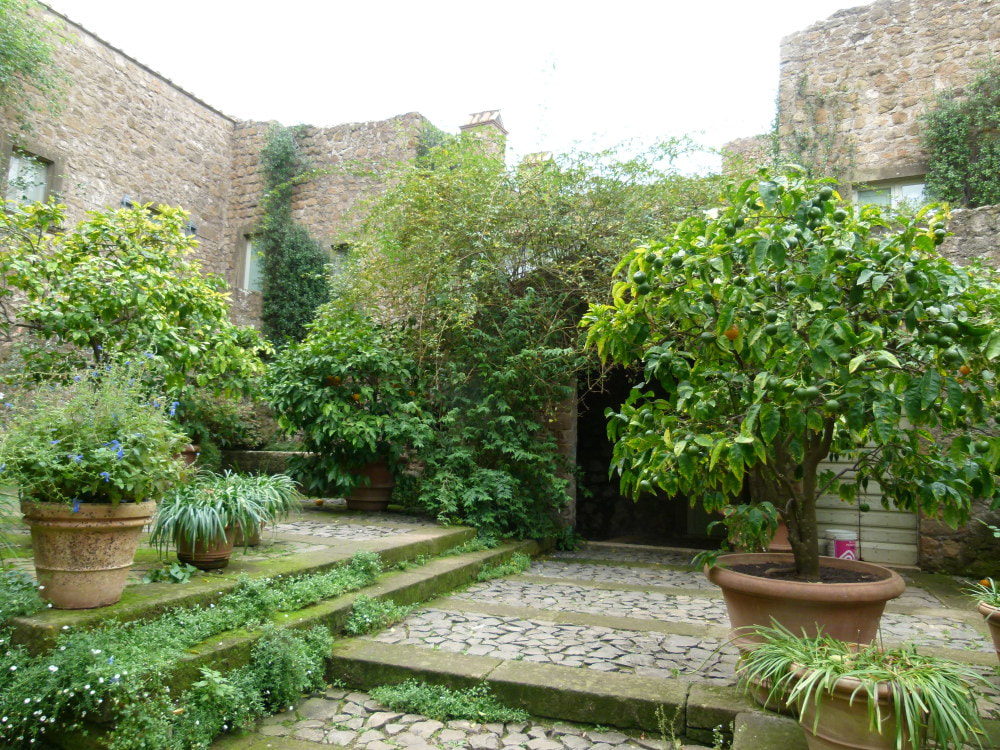
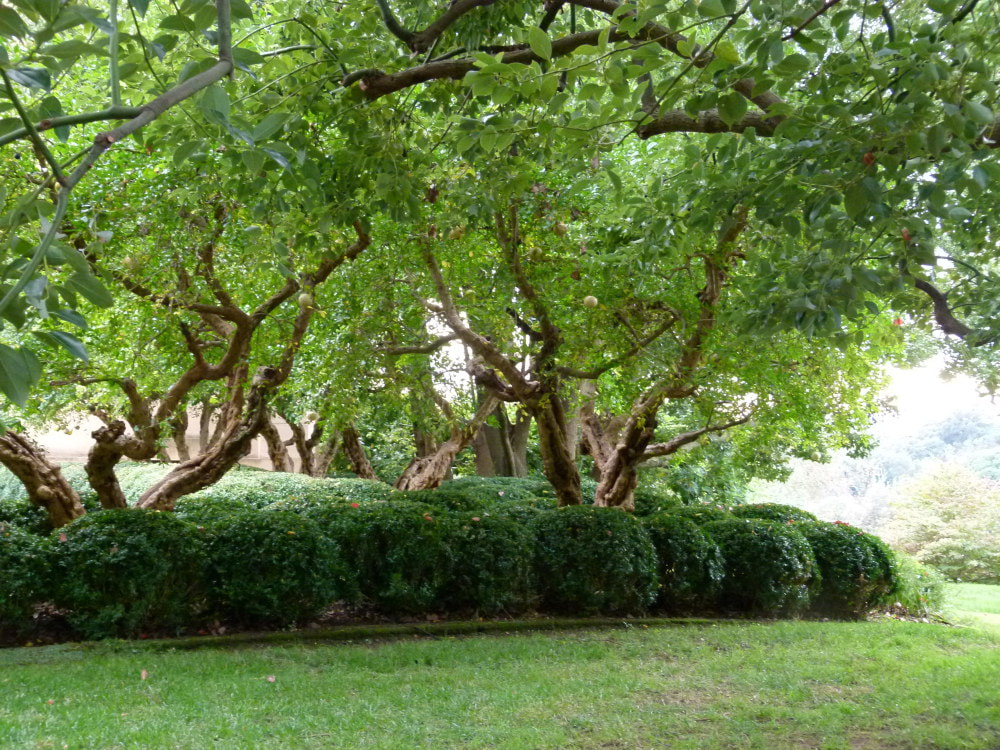
Wonderfully contorted pomegranates and pillows of box
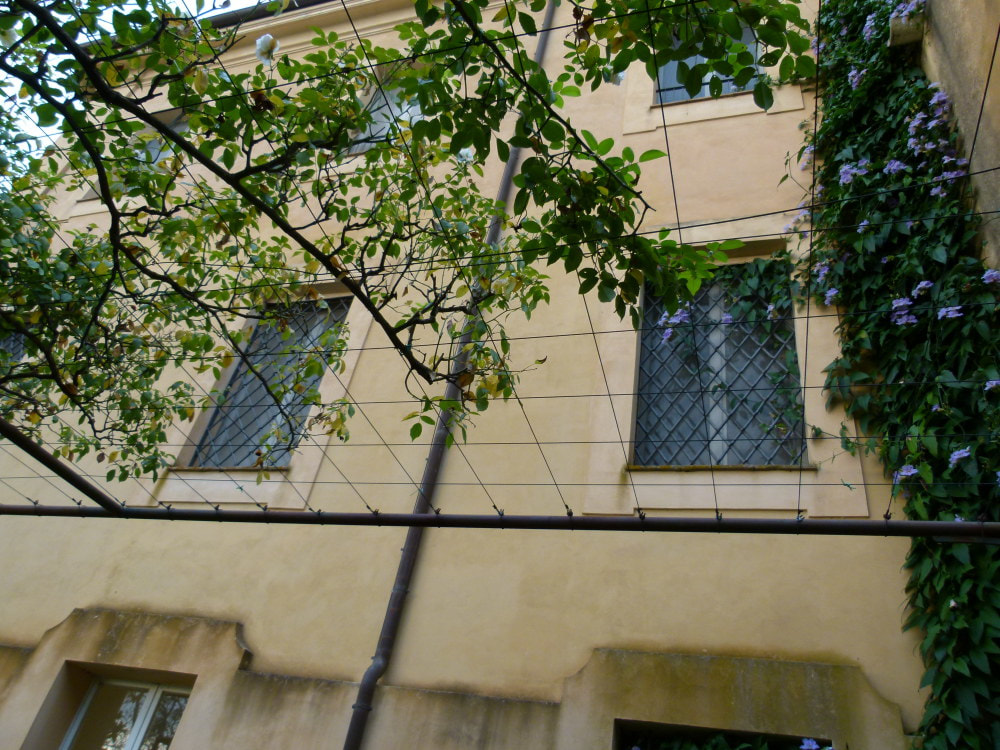
Thunbergia grandiflora scaling the heights
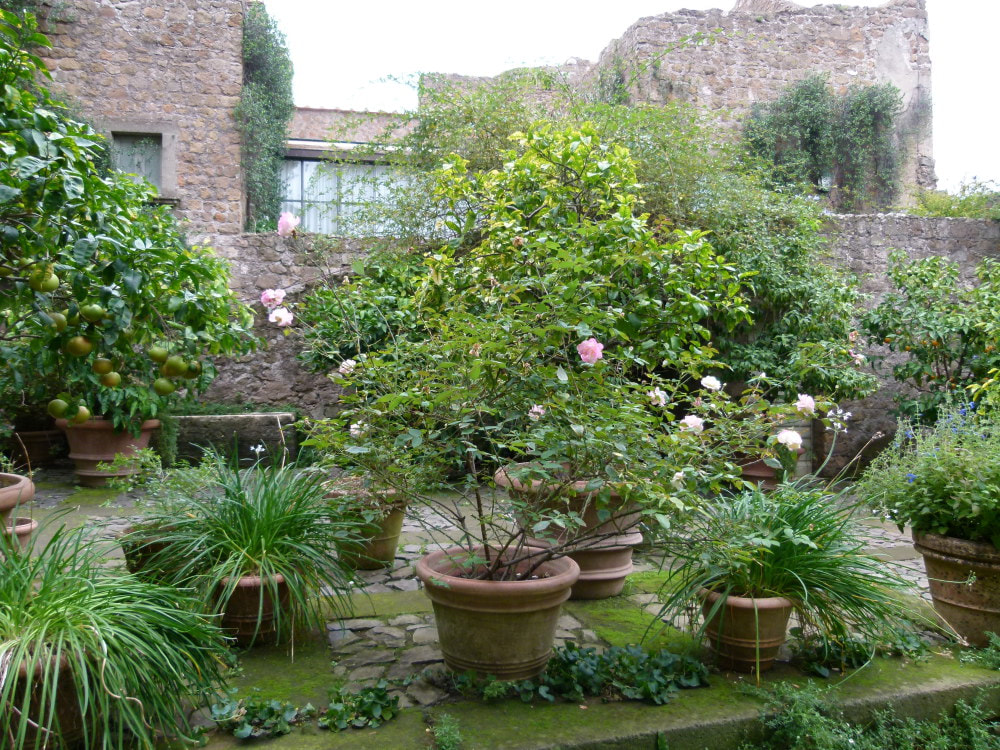
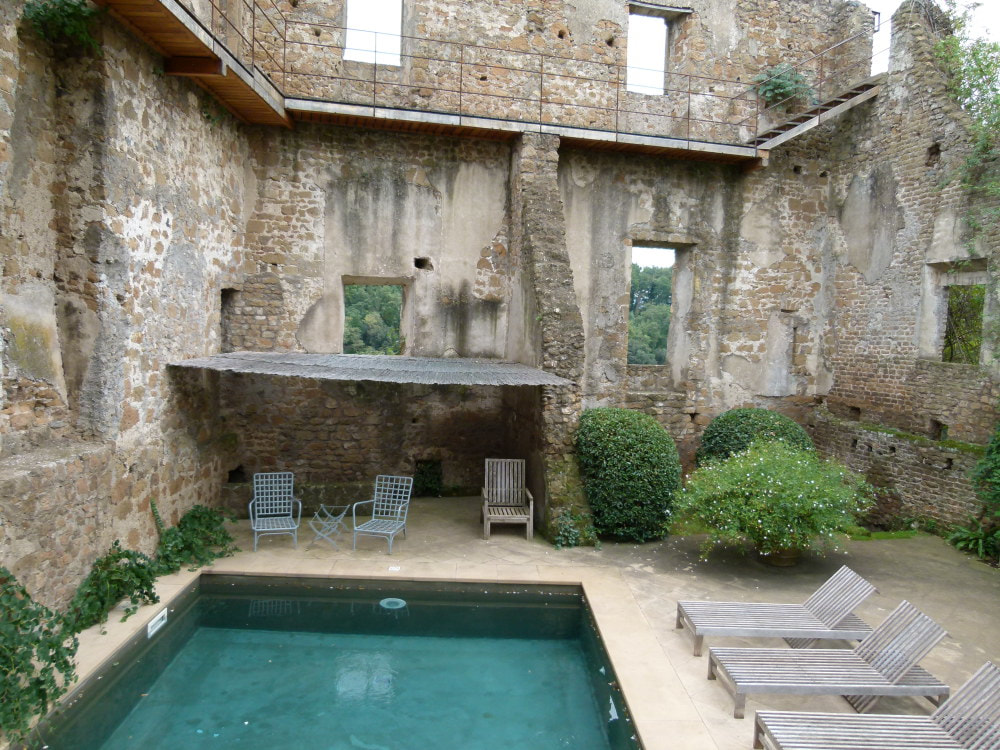
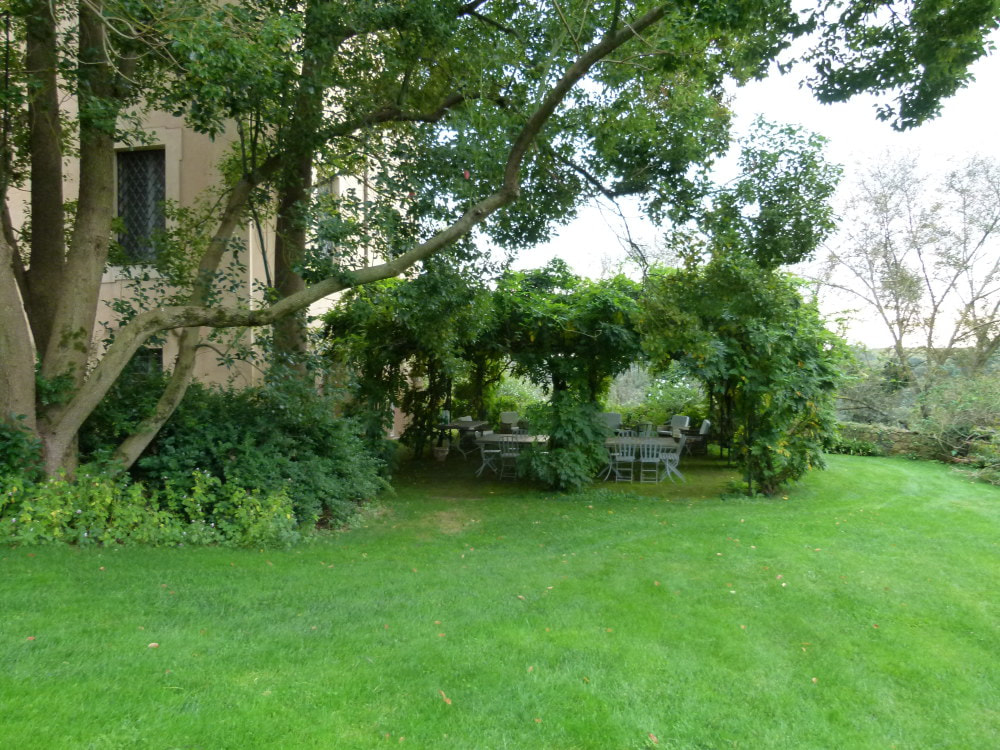
Wisteria sinensis over the dining table
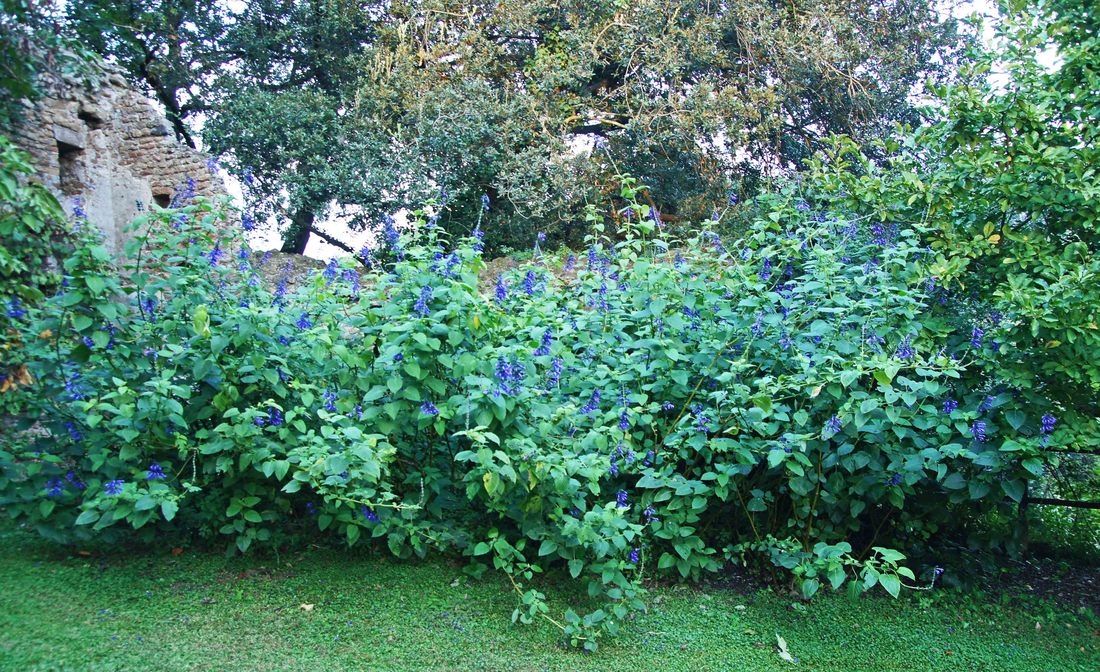
Salvia ‘Amistad
Many roses came originally from Hillier’s Nursery and follow the original colour theme – again ‘Madame Alfred Carrière’ features – and the walls and pergola support enormous white Wisteria sinensis. After the death of Violante there was a rethink and a limited colour range of blues and purples was introduced (under the supervision of Pearson’s pupil Stuart Barfoot) together with yellow roses, notably ‘Rêve d’Or’ and numerous David Austin cultivars, including ‘Jude the Obscure’. A particularly extensive wisteria covers the wall in an enclosure with a dark ‘table top’ pool, which in spring and early summer is surrounded by annuals. The blue/purple theme is evident in autumn with lush plantings of Salvia ‘Amistad’ and an energetic Thunbergia grandiflora soaring up the villa wall.
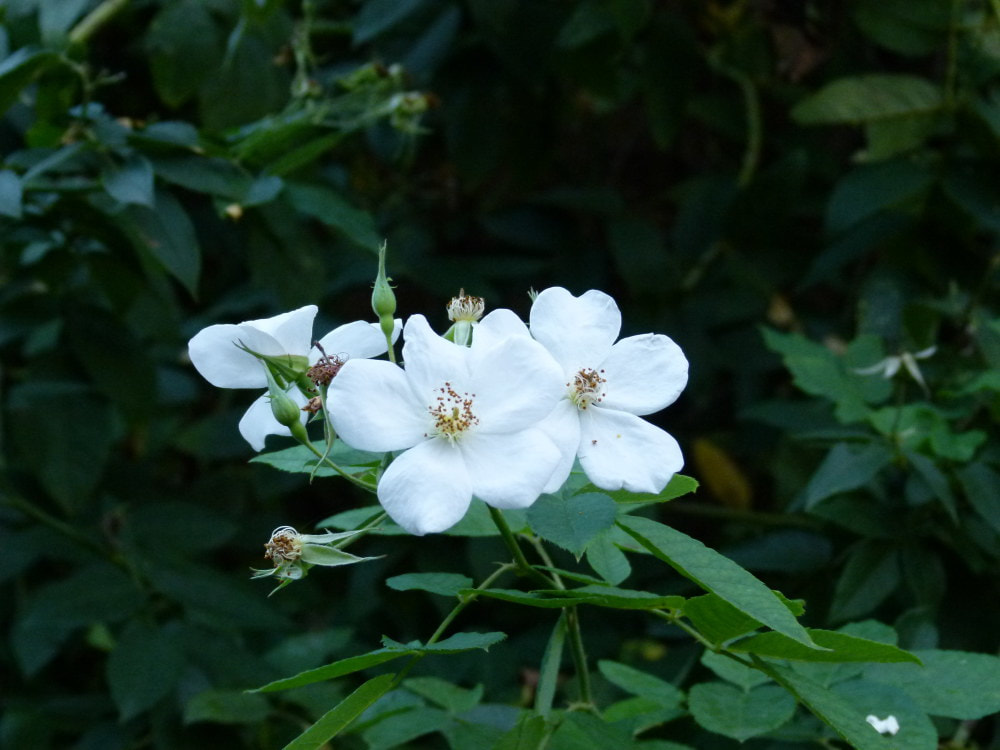
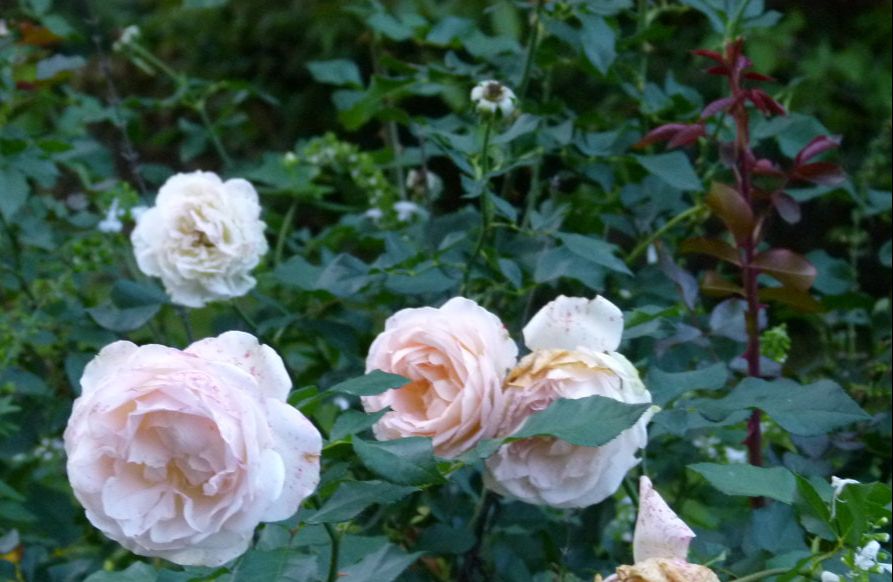
In contrast to Ninfa, with its open and sunny expanses of flowing water, Torrecchia feels more enclosed and secret, an effect enhanced by the low light levels and slanting autumnal sunlight evident during our tour.
Tuesday morning’s visit was an abrupt change of gear. The Villa d’Este outstrips all superlatives – a masterclass in excess and one-upmanship. Begun c 1565 by Ippolito d’Este, Bishop of Ferrara, Governor of Tivoli, grandson of a pope and son of Lucrezia Borgia, Ippolito was a man of erudition and cultivation. He was also fortunate in that his domain included the site of Hadrian’s villa, which was being excavated by his architect Pirro Ligorio, and many of the statues found there were used to embellish the Villa d’Este and its gardens.
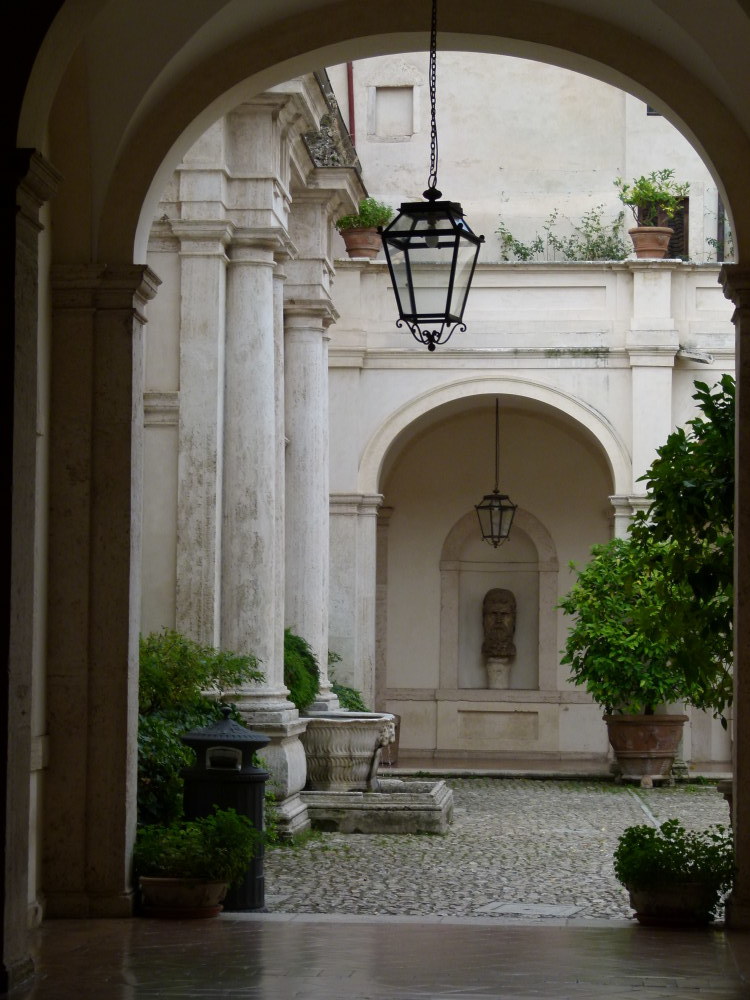
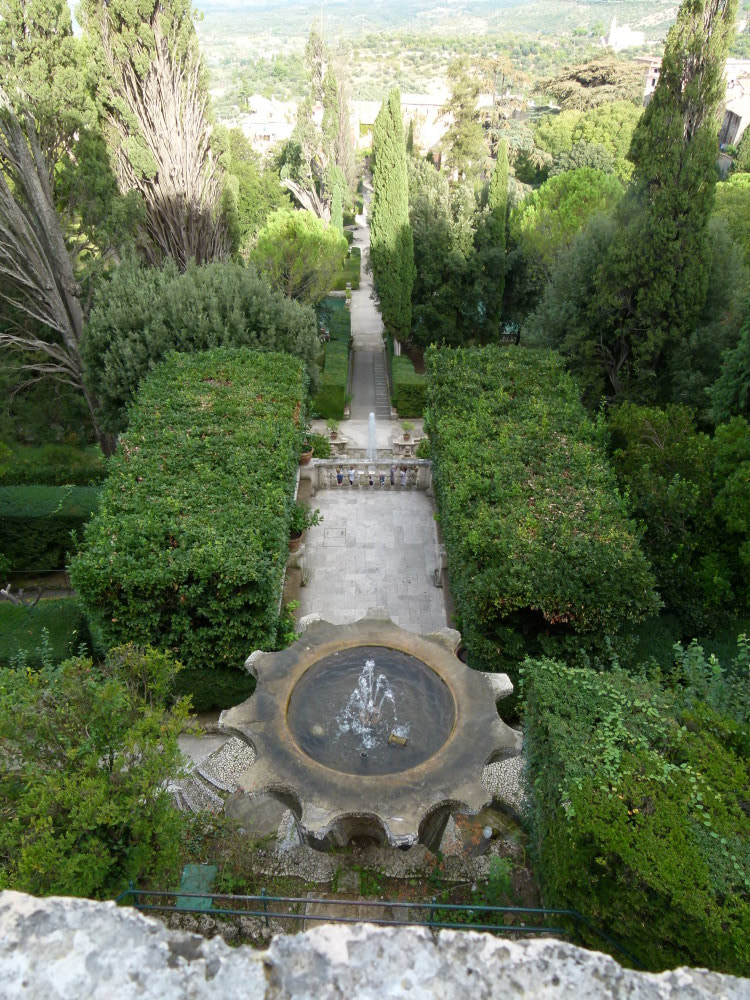
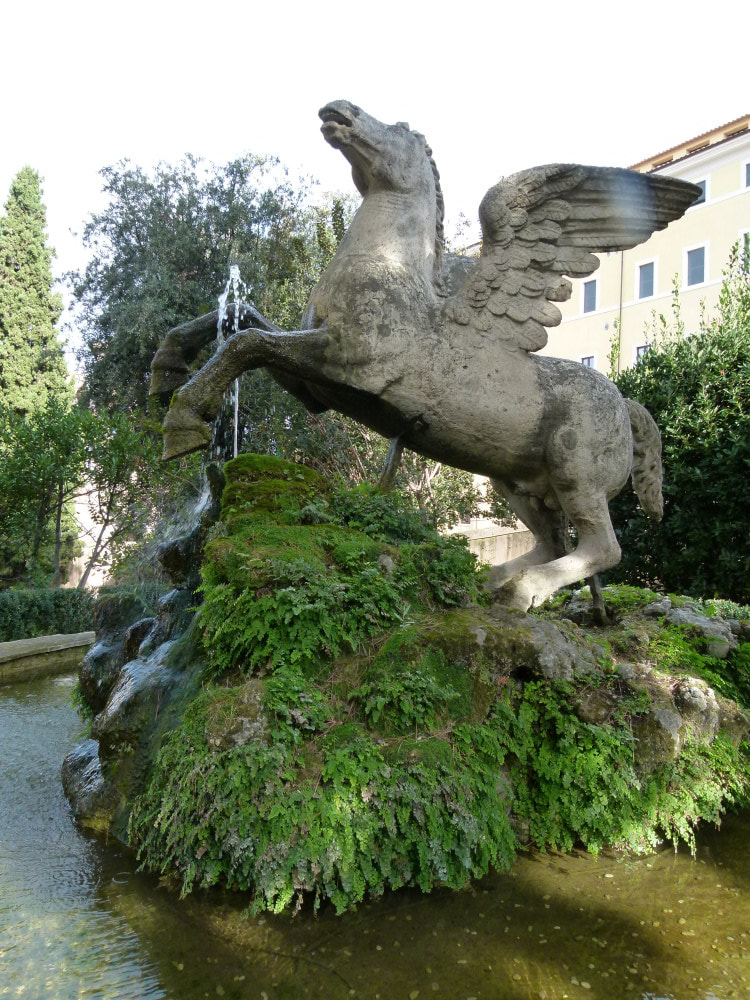
Pegasus
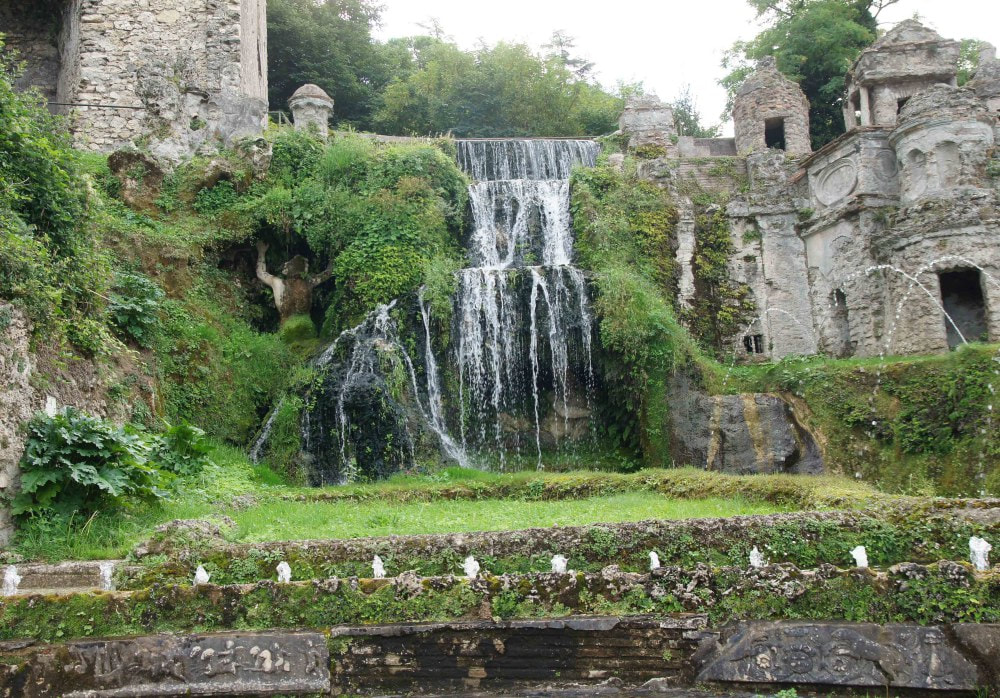
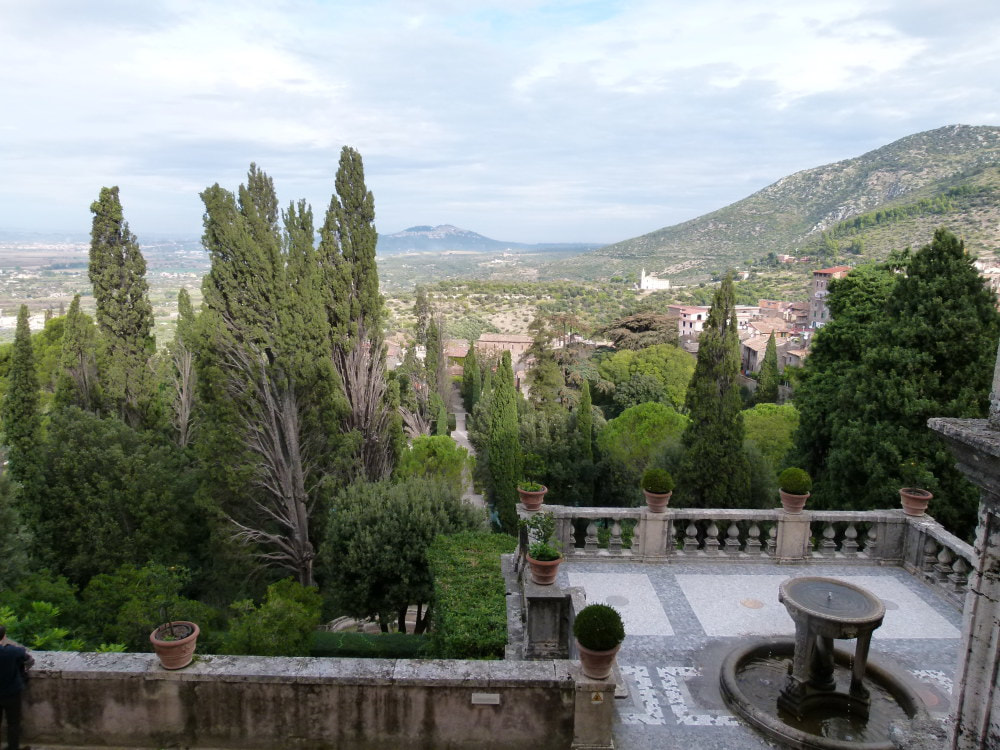
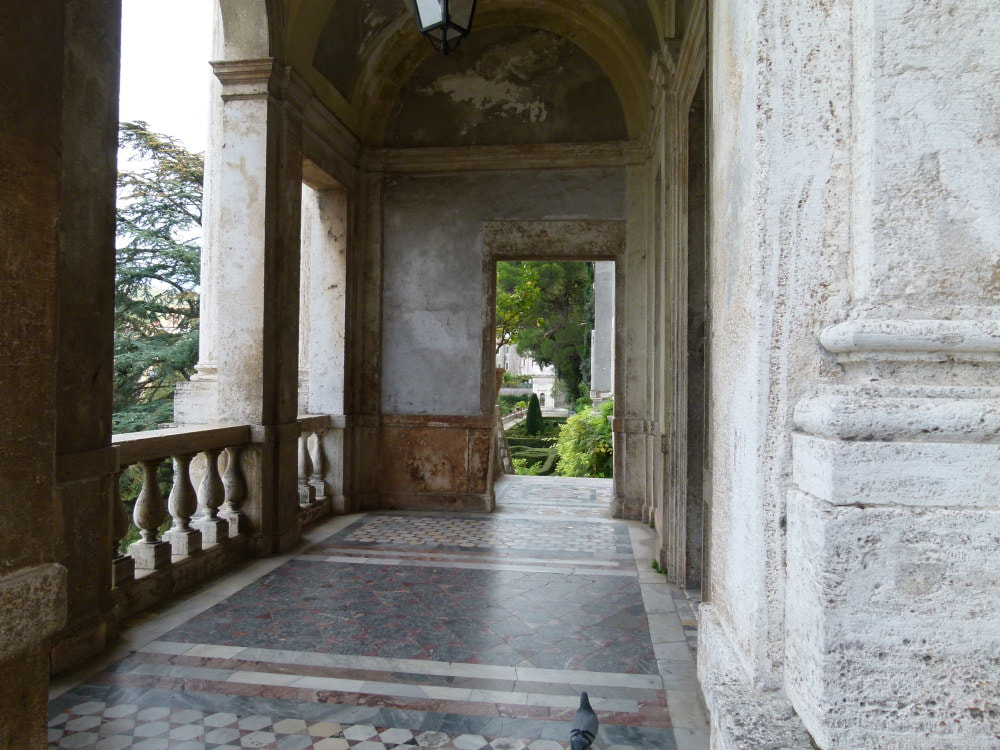
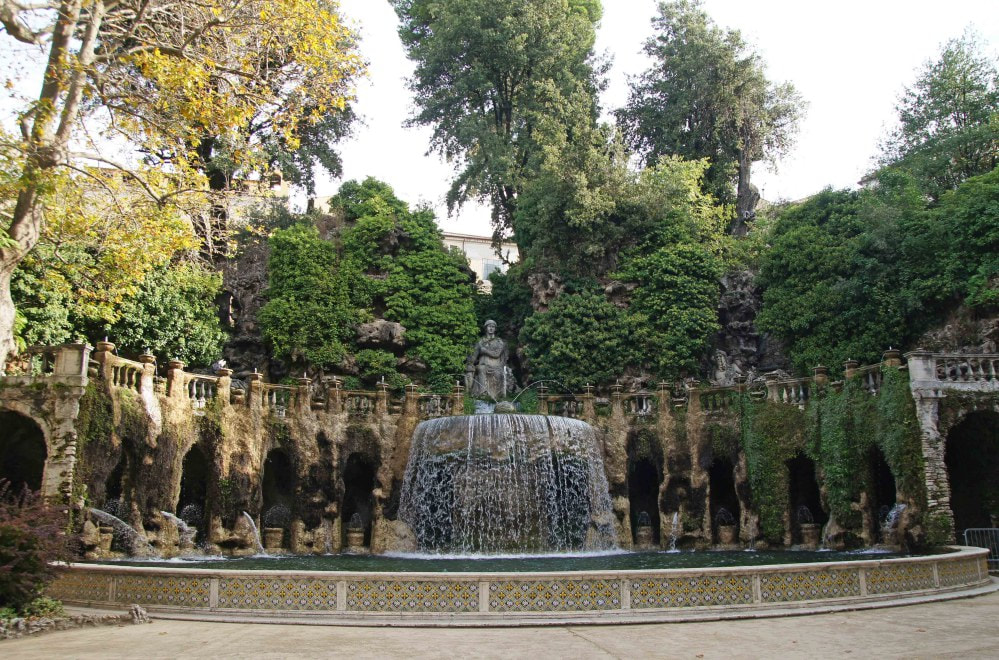

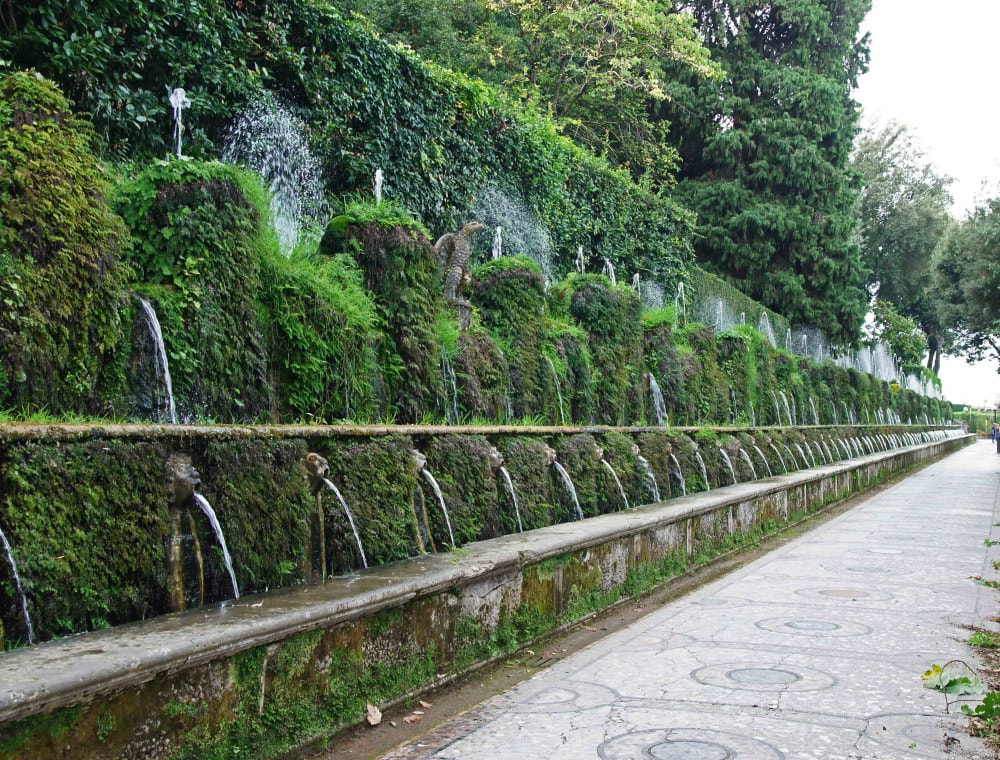
One hundred fountains?
The Villa d’Este has an abundant water supply, which is channelled into an increasingly dramatic series of water features and giochi d’aqua. We began with a statue of Pegasus striking the rock to inspire the Muses whose garden this is and descend past winding paths around grottos and loggias towards lengthy and delightful terrace of the Hundred Fountains, all sounding different notes and leading towards an expansive view of Rome. This is a garden of all the senses, particularly sound, some to charm, some to terrify – others, such as the tremendous Fontana dell’Organo, combine air and water power to play a series of contemporary tunes to the awestruck onlooker.
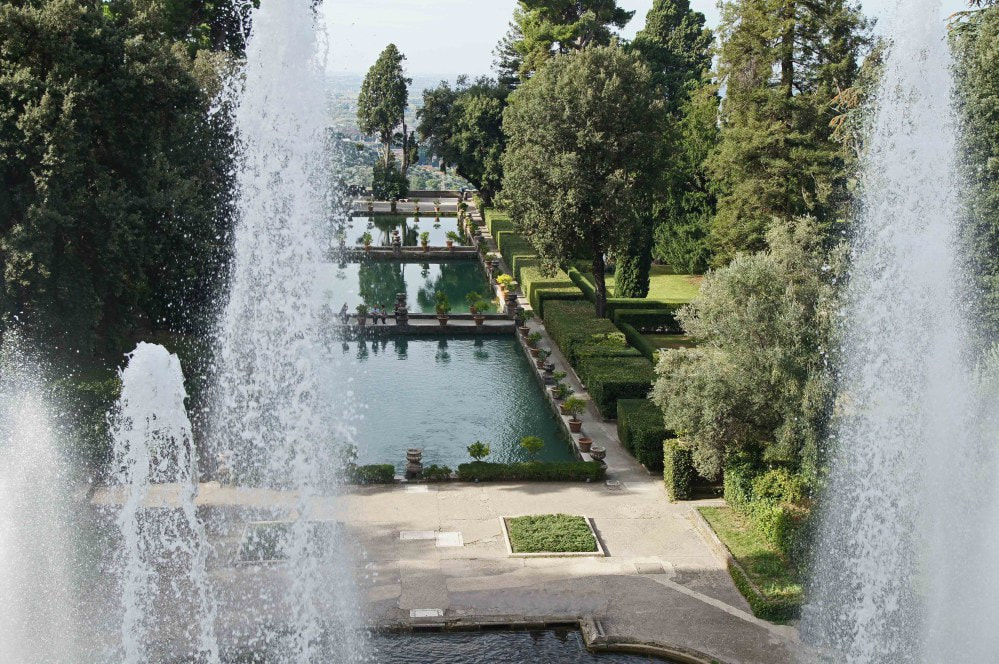
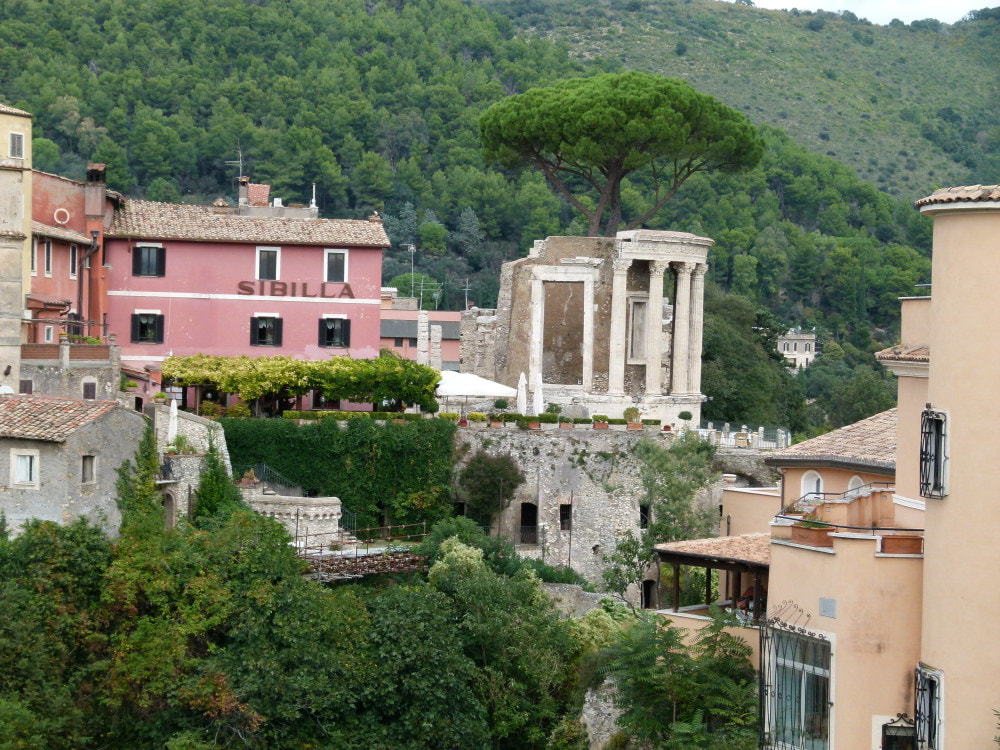
Temples of Vesta
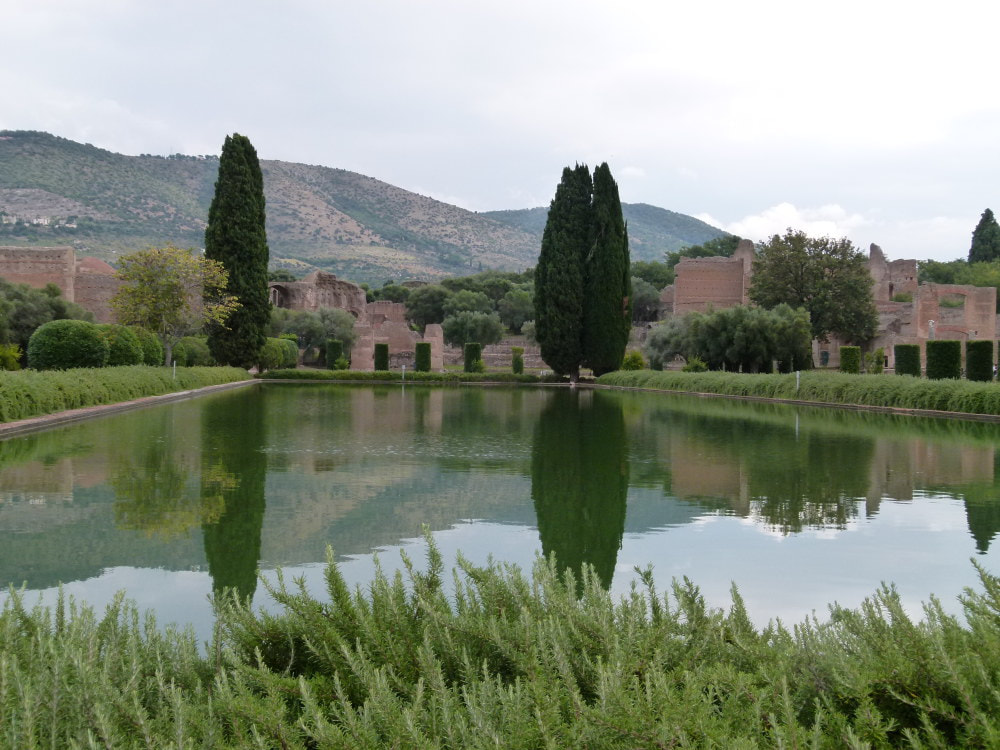
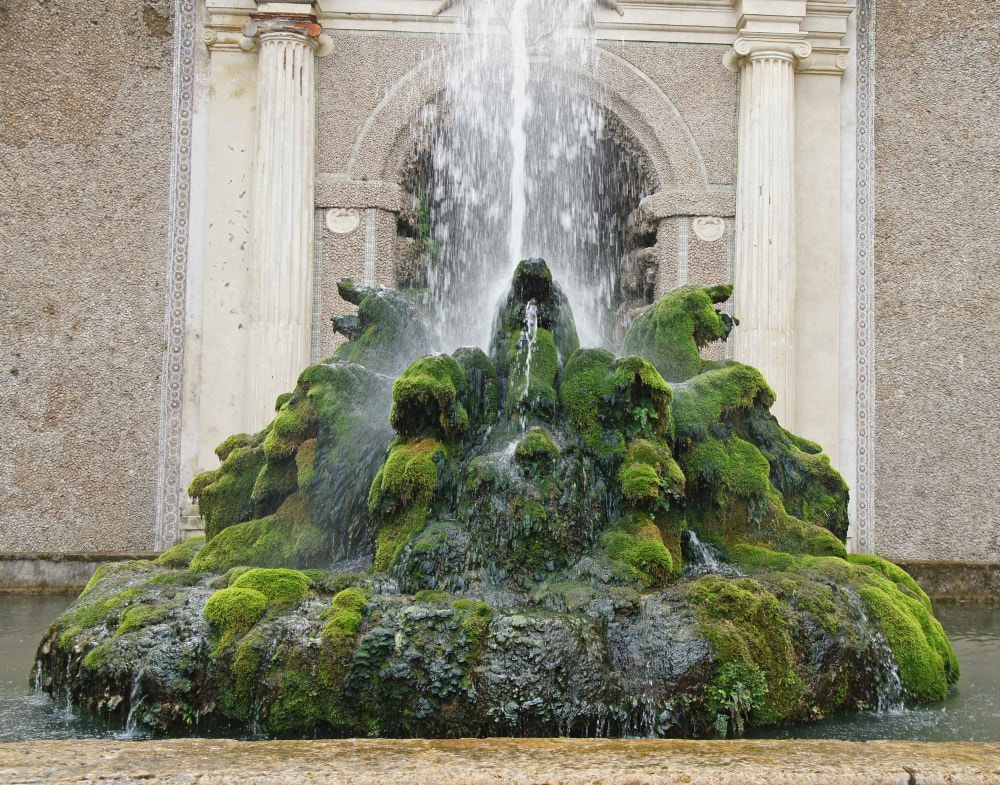
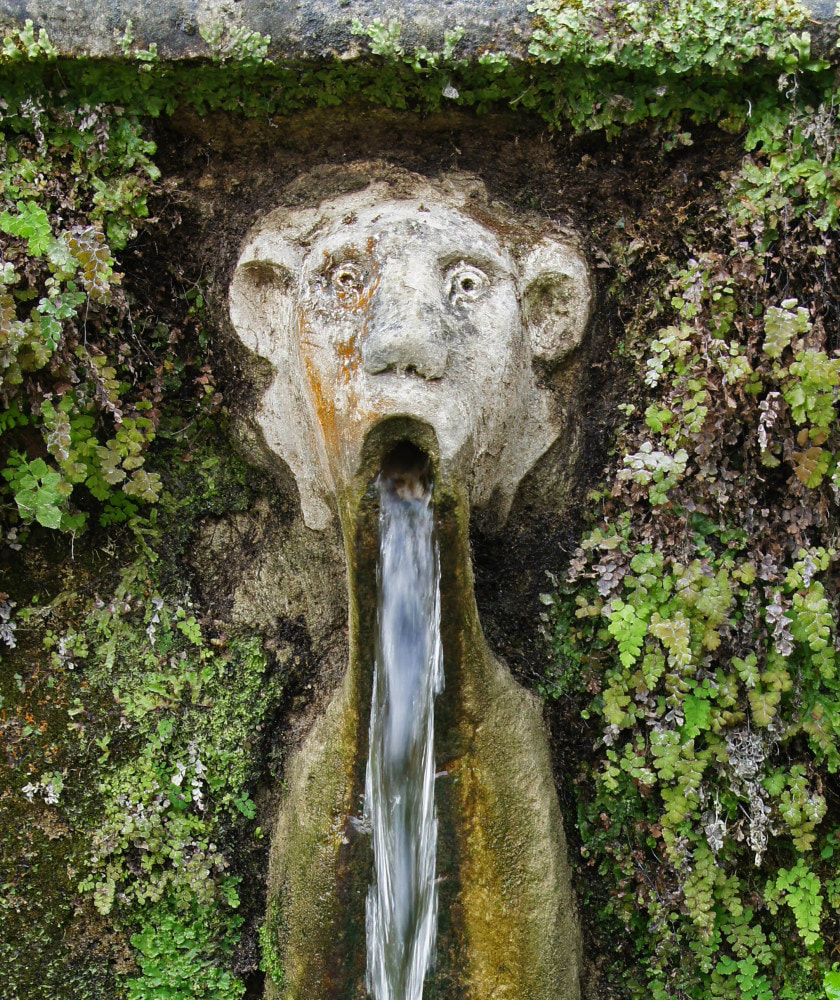
After a delightful lunch in Tivoli, right next to the two temples of Vesta – instant and easy sightseeing-on-a-plate – we moved on to the Villa Adriana. Hadrian began his summer retreat, more of a full-sized town really, c 110 BC. Excavated from the 16 century AD, its influence on numerous architects, particularly Palladio, Vignola and Michelangelo is well known. Christina took us to three particularly influential areas before encouraging us to wander round the rest of the site. We went first to the expanse of water known as the Pecile, a huge porticoed area surrounding a garden and rectangular central pool.
Today the vanished columns are successfully replaced by columnar bay trees. The so-called Maritime Theatre was the site of the emperor’s private rooms. Its circular construction, ringed with a moat, can be traced in many later circular fountains, notably at the Villa Lante and the Boboli Gardens. Lastly we looked at the Canopus, which has a domed dining pavilion at one end of a pool of water and the remains of a colonnade at the other. This had caryatids replacing some columns and was decorated with numerous statues. The high stone banqueting couch surrounding the pool suggests a luxurious summer dining room for the emperor and his entourage.
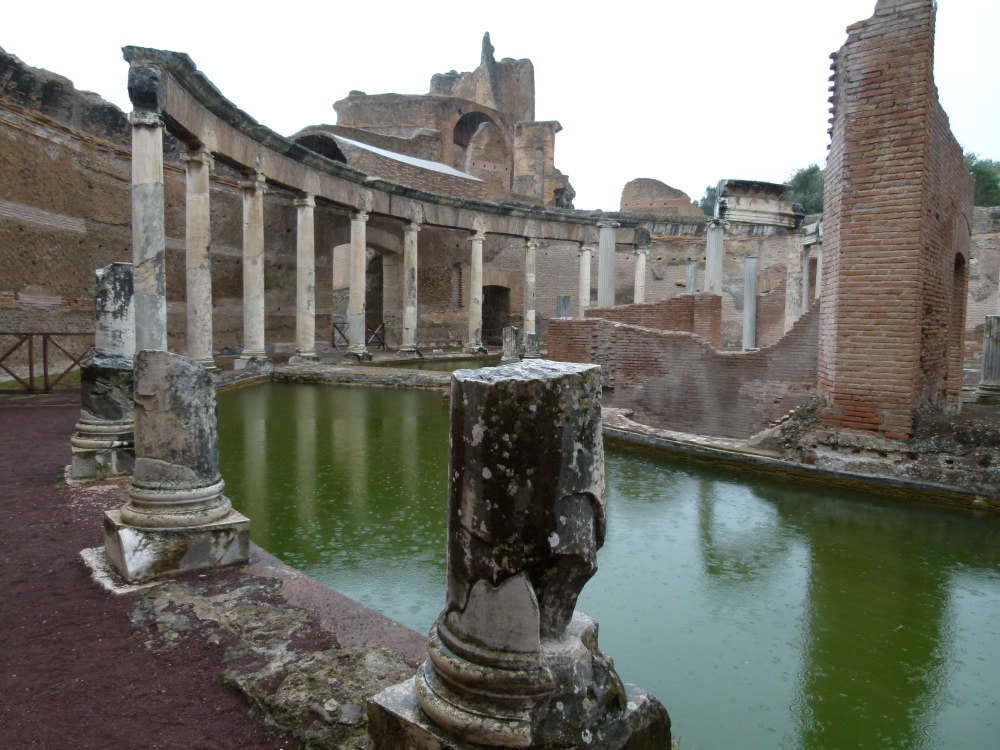
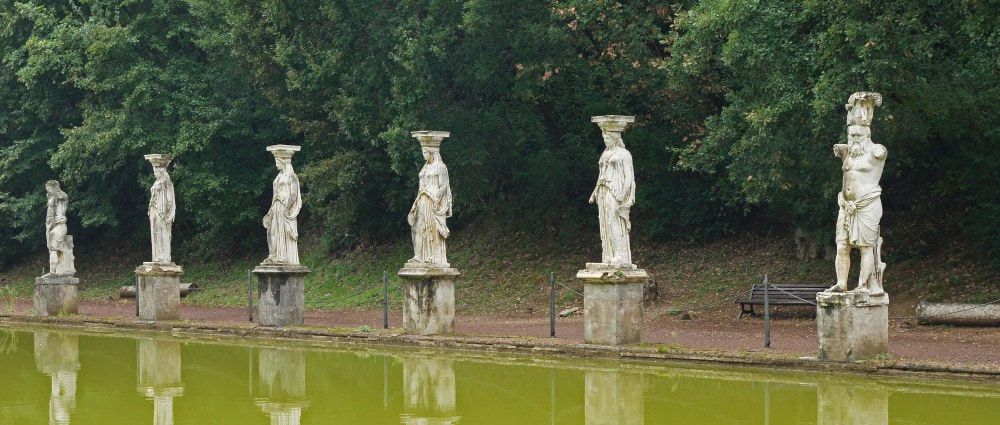
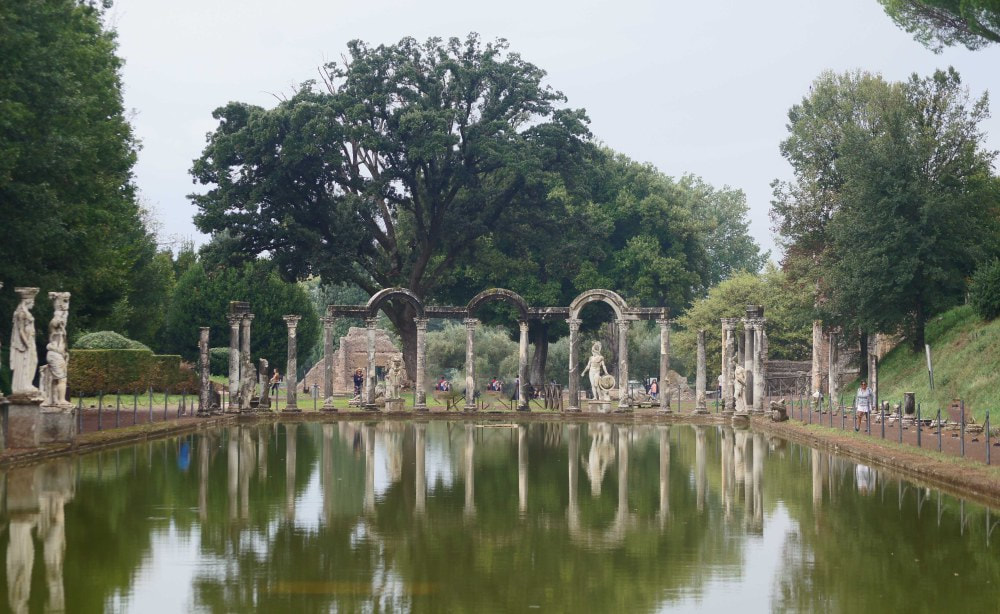
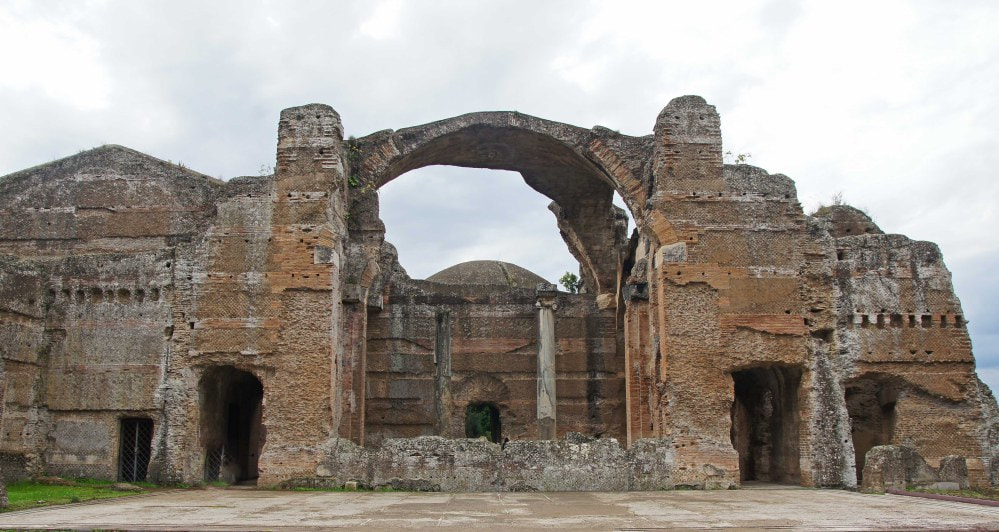
After returning to the hotel we regrouped and, fortified by very welcome glasses of prosecco thoughtfully provided by the MPG organisers, Christina gave us a short talk on the principles of Mannerism in the gardens of northern Lazio. She likened them to the plays of Shakespeare in their complicated layers of pretence and trickery, unlike the obvious exuberance of the Baroque.
The following day we travelled north to three examples of competitive garden design surrounding Viterbo. This was a long day.
Our first stop was the Villa Lante, considered the finest example of a Mannerist garden. Less exuberant than the Villa d’Este, a painting of which appears in one of the small pair of casinos at the foot of the garden, it nevertheless employs some of the same motifs. Pegasus, the Muses, grottoes, giochi d’aqua, cascades and fountains. We were encouraged by Christina to walk through the garden with our eyes decorously lowered until we reached the original, upper entrance and could begin our visit as first intended. Another cardinal, Francesco de Gambara, created this garden and left delightful visual puns upon his name throughout. The two houses of the muses below the upper gate have low-relief prawns (gambari) and the water-chain, possibly the earliest garden feature of this kind, is composed of a strangely elongated prawn ending in a massive pair of claws.
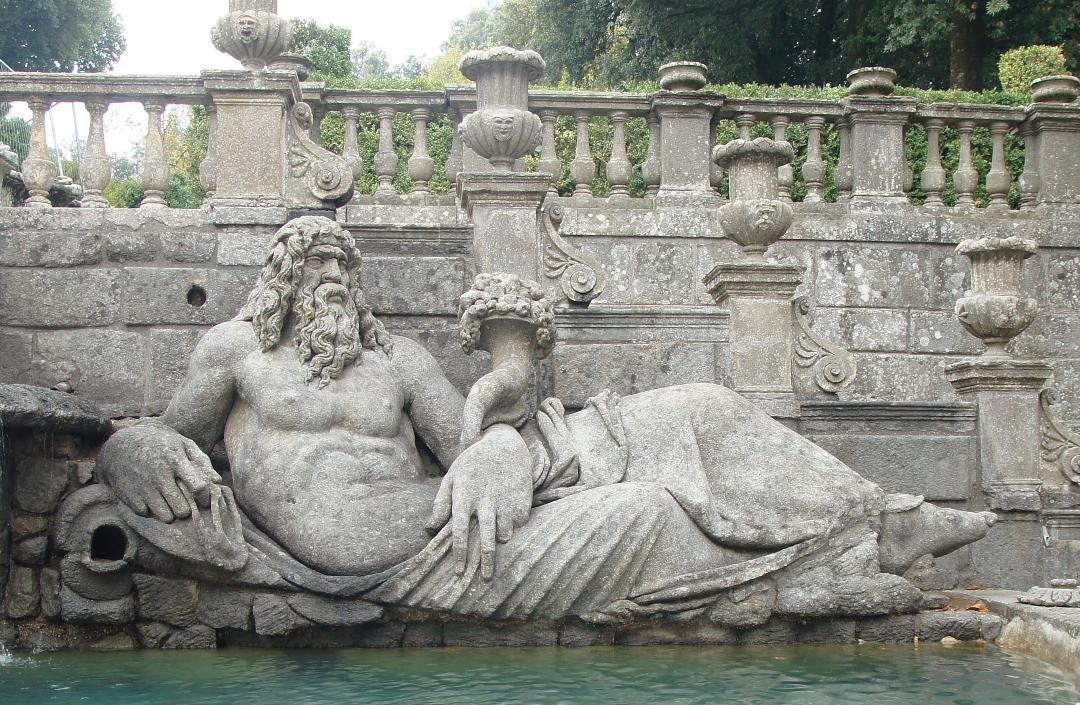
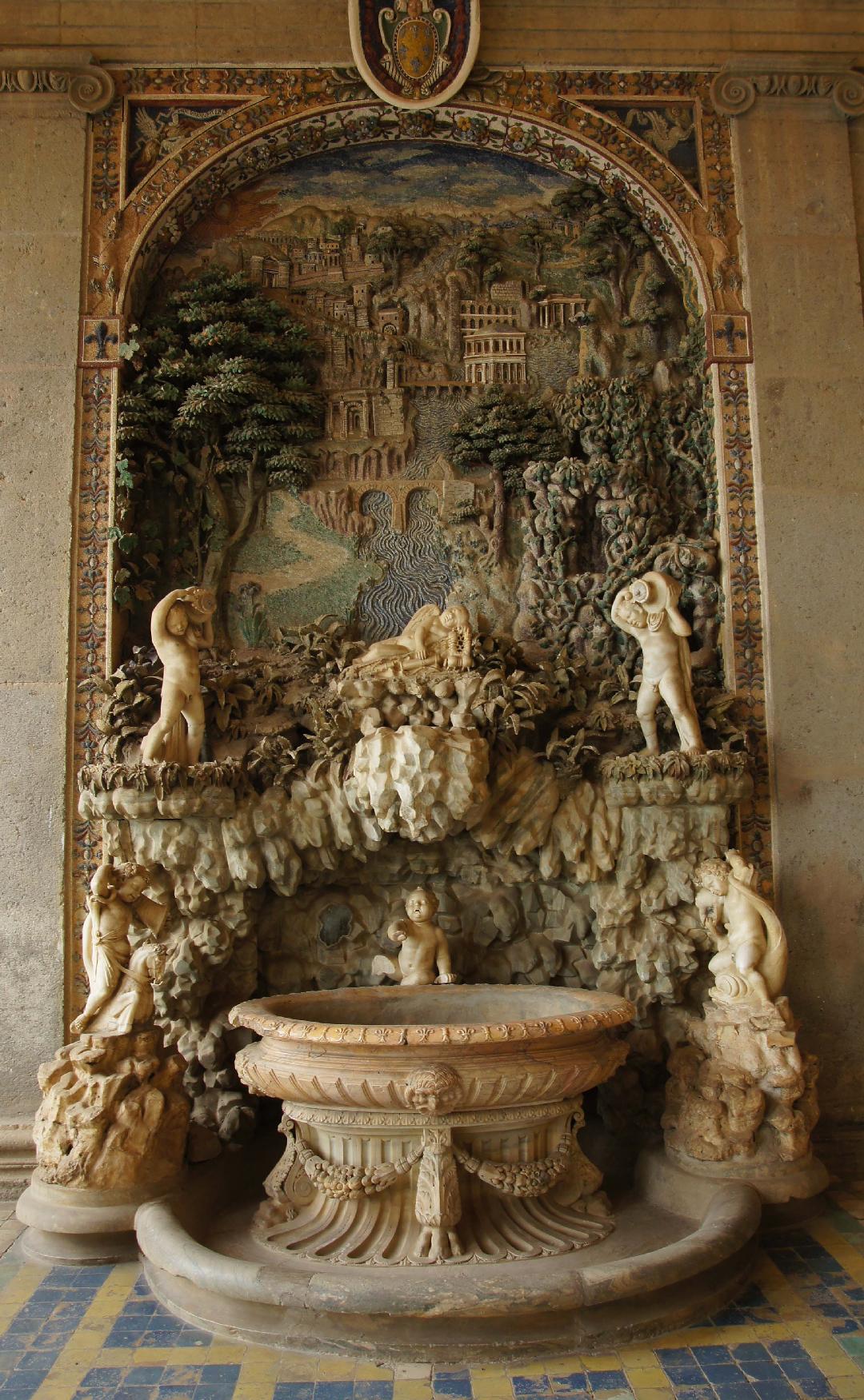
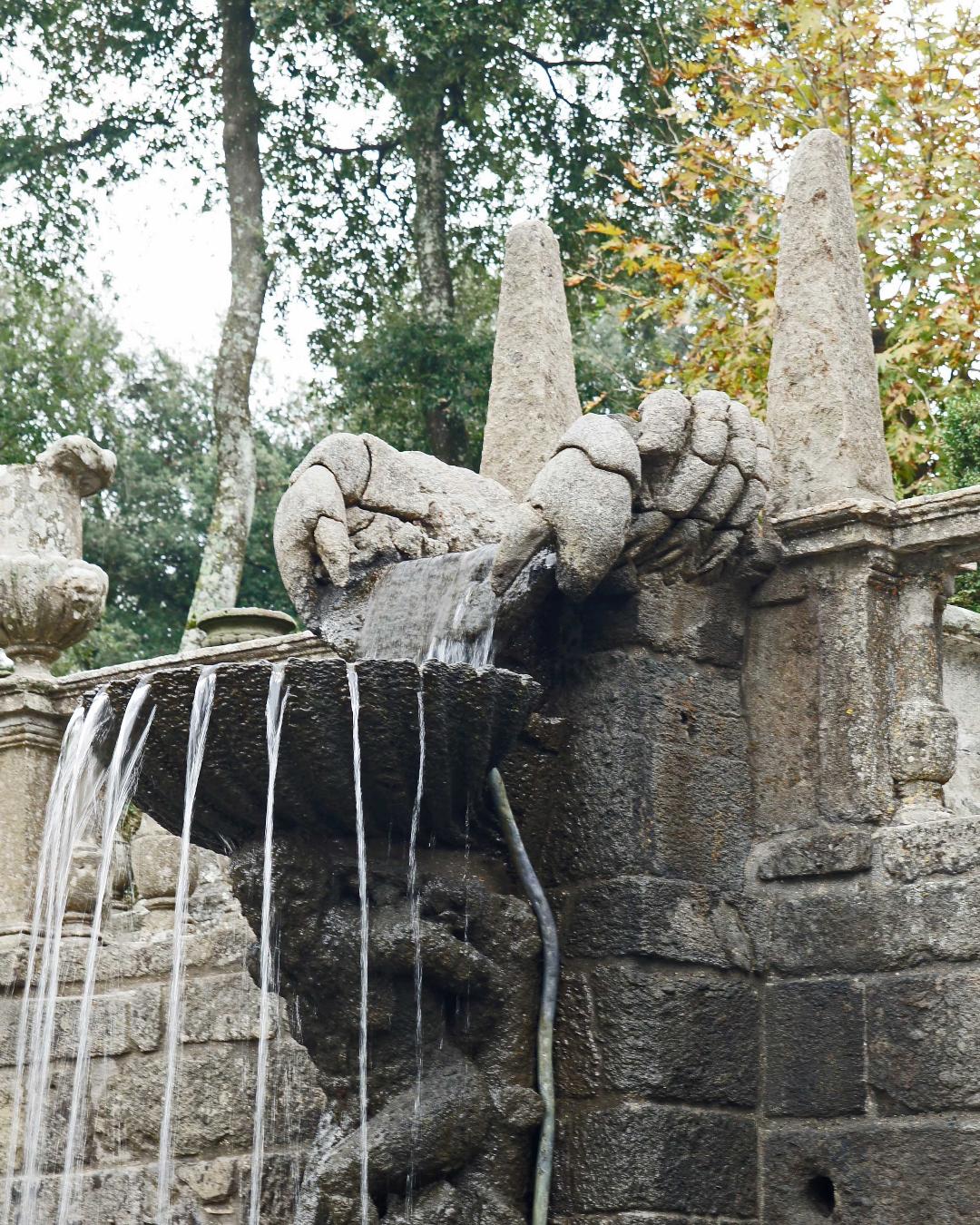
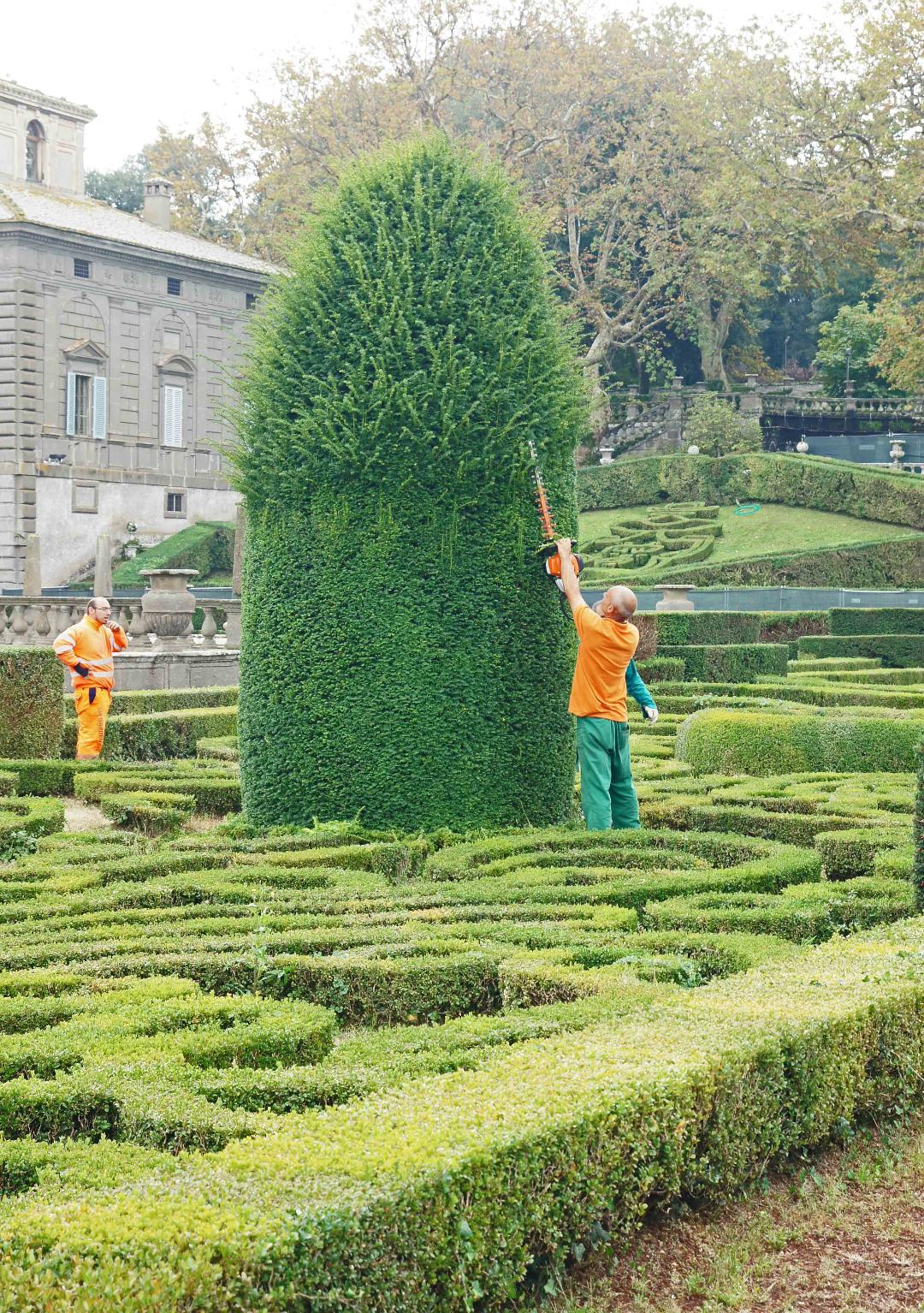
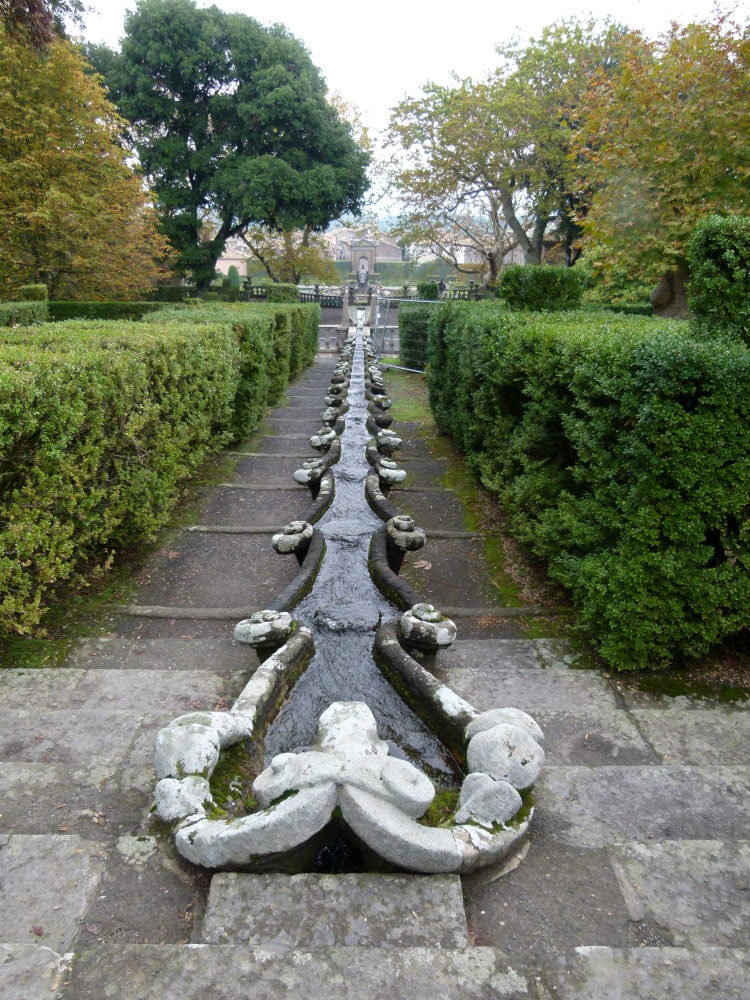
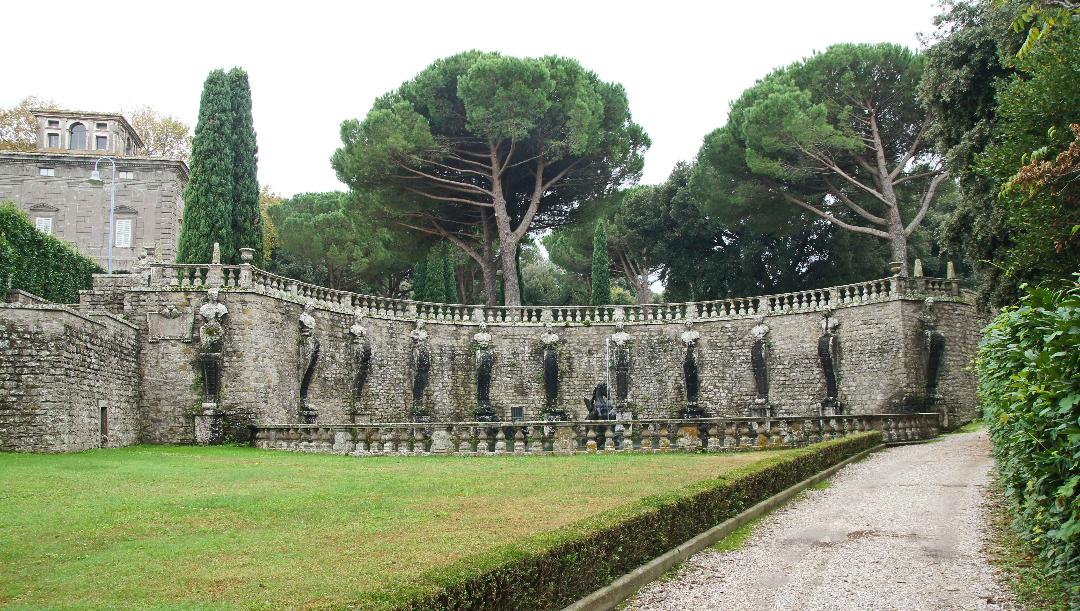
As the visitor descends, the gardens unfold in a series of scenes depicting the passage from nature to civilisation. There are fountains with dolphins representing the sea; fountains with lounging statues of the gods of the rivers Arno and Tiber; a table of water; and a fountain of candles – sadly not in good working order. Water is everywhere, around each corner, on every level. Christina suggested that the box we saw was probably not the original hedging, but that it followed quickly upon the original, rosemary, myrtle, hyssop and sage that would have been used, being less work to maintain. Hedges would have been trimmed tightly to cast sharp shadows and trees planted to echo and balance columns. The last fountain, the Fountain of the Moors, is directly influenced by the Maritime Theatre at the Villa Adriana.
On, hastily, to the Villa Farnese at Caprarola, where we exchanged goats for prawns in the iconography. A brief tour of the imposing interior included a small studiolo with delightful acoustic surprises and the magnificent Room of the World, with surprisingly accurate late 16th century frescoed maps and an astronomical ceiling. Onwards and upwards to the gardens and, more particularly, what is known as the Secret Garden reached through a planting of sweet chestnuts. This follows and challenges the innovations at the Villa Lante. There are two water chains, loggias similar to those at Lante and a charming picnic house. Again, the design is deceptive: what appears to be a one-storey building gradually reveals its full extent, staircases lead to more surprises and finally to a tranquil upper area which has level squares probably planted with flowers. Alessandro Farnese, yet another cardinal, collector and diplomat (when did these men find time for any ecclesiastical duties?), was a noted plant collector and there are several introductions with the name farniesina.
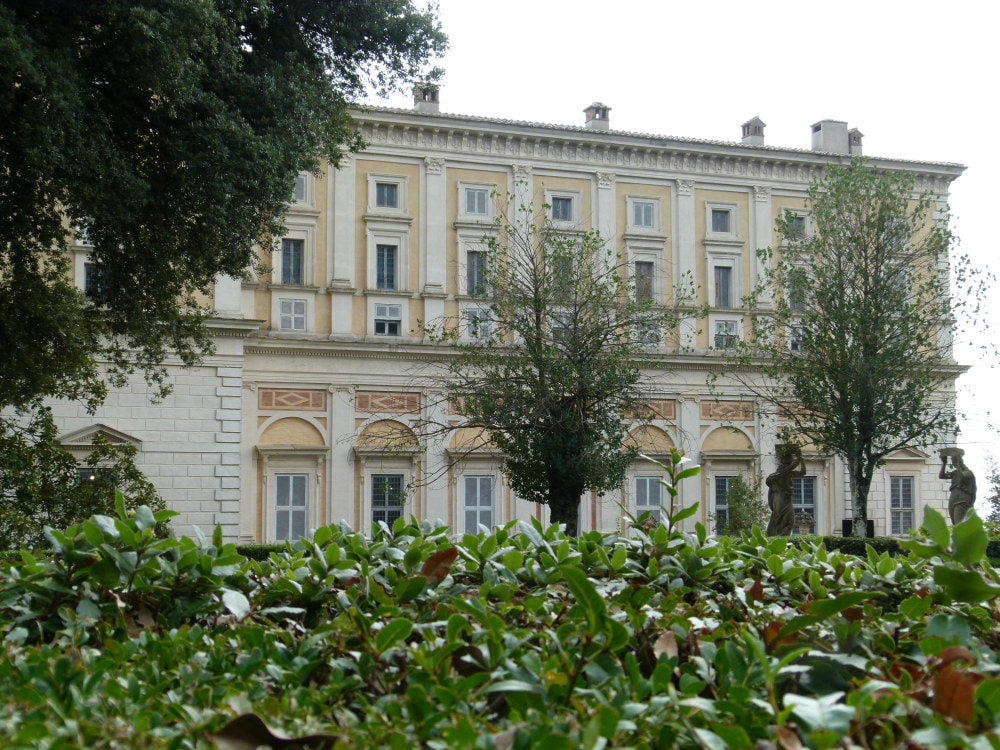
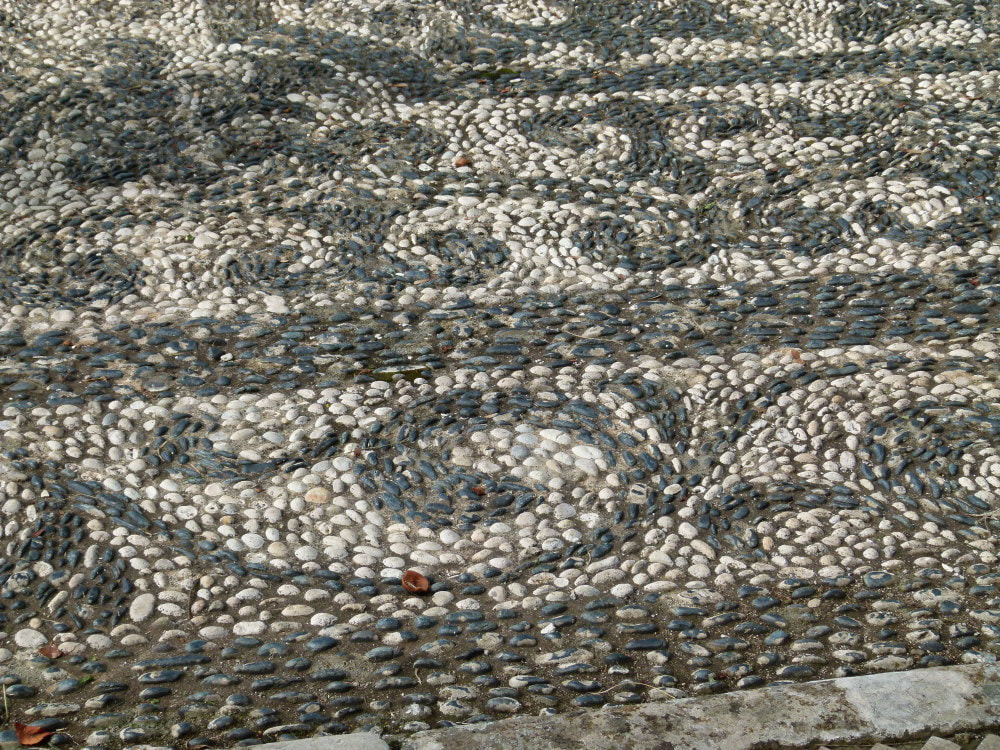
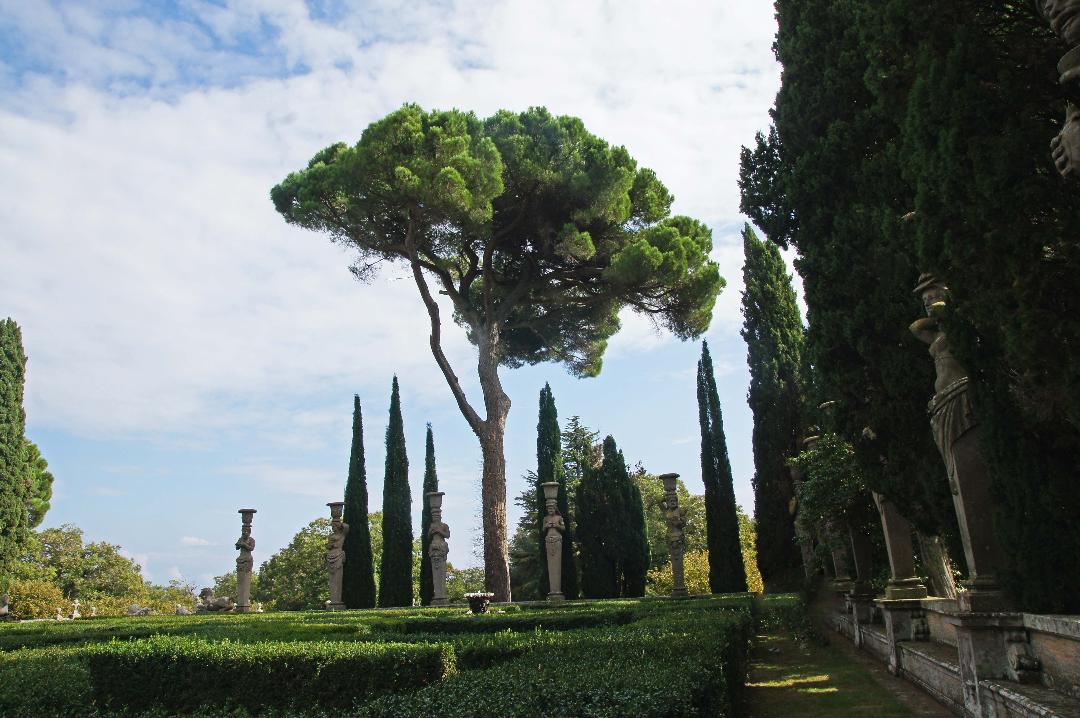

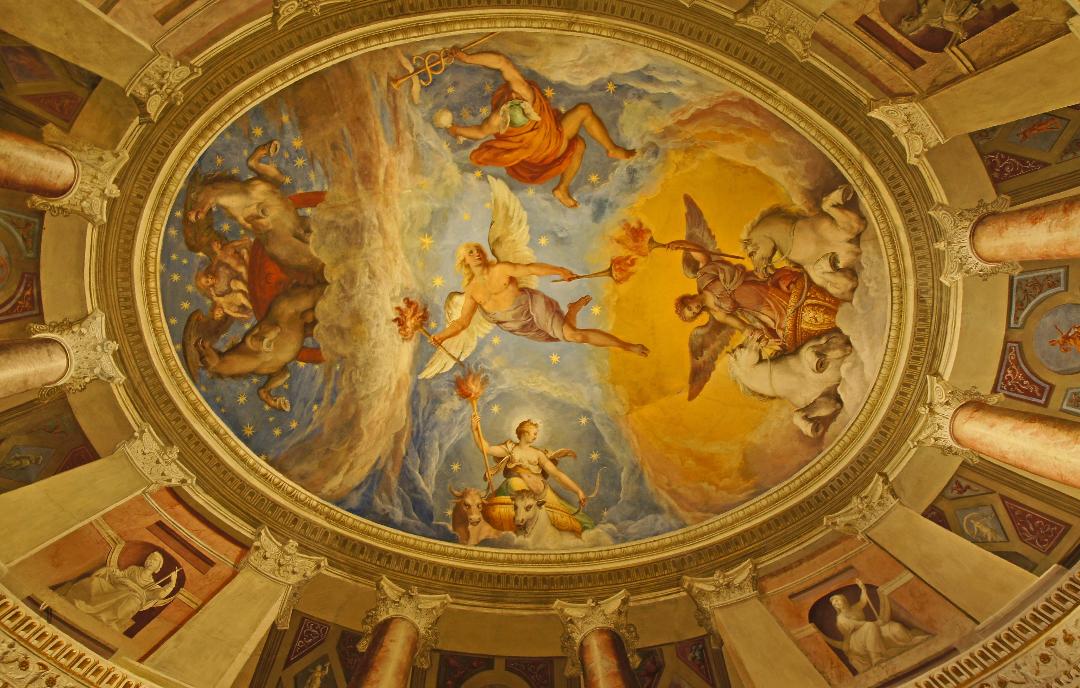
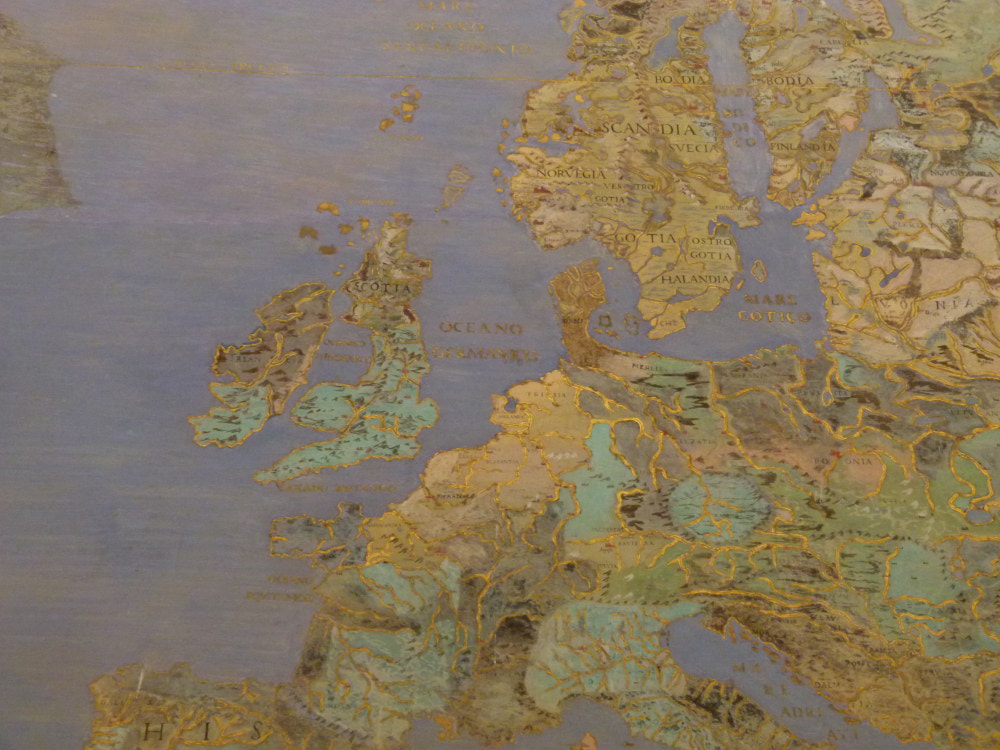
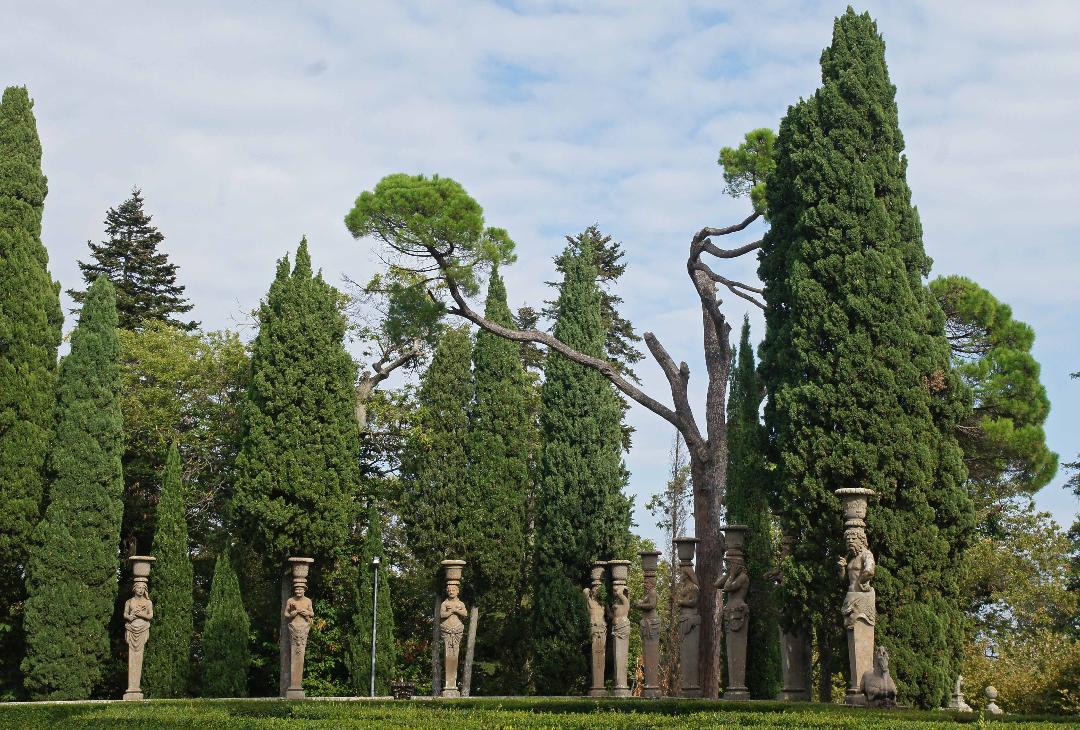
After a large and late lunch, we dragged ourselves (metaphorically) to Bomarzo, the site of the Sacro Bosco.
Any sense of lassitude was dispelled by Christina’s first surprise – an extraordinary pair of monumental wrestling figures. This garden was conceived by Pier Francesco Orsini, a reluctant soldier whose career had ended with a long period of captivity. When freed he retired to his home and began to create a strange, entirely secular ‘garden’ notable for its series of grotesque figures within a wood, perhaps cocking a snook at all the complex gardens built by his neighbours.
The original entrance is an extraordinarily disconcerting leaning house – preparing the visitor for the shocks that lie ahead. Everything appears to have at least two meanings, others more than that. What is one to make of the gaping mouth built into a slope, with two gigantic teeth hanging over those brave enough to enter, or an elephant with its trunk twined around a Roman soldier? Then there are the giant pine cones and acorns, a turtle (giant, of course) with a winged female figure on its shell and two delightful little bears punning on Orsini’s name. It is a positive relief to come across the mausoleum to Orsini’s wife Giulia Farnese, a small chaste temple on the upper part of the gardens.
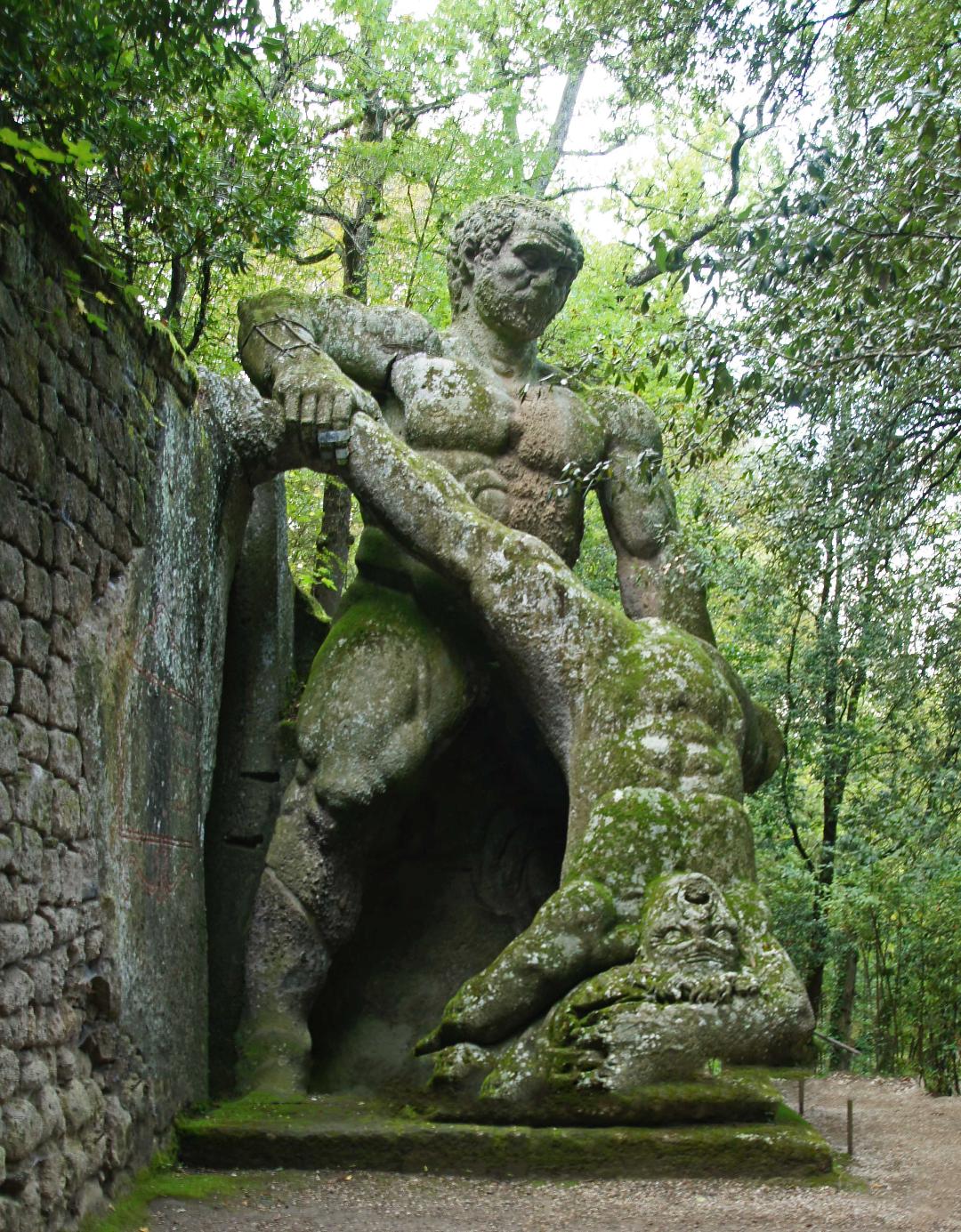
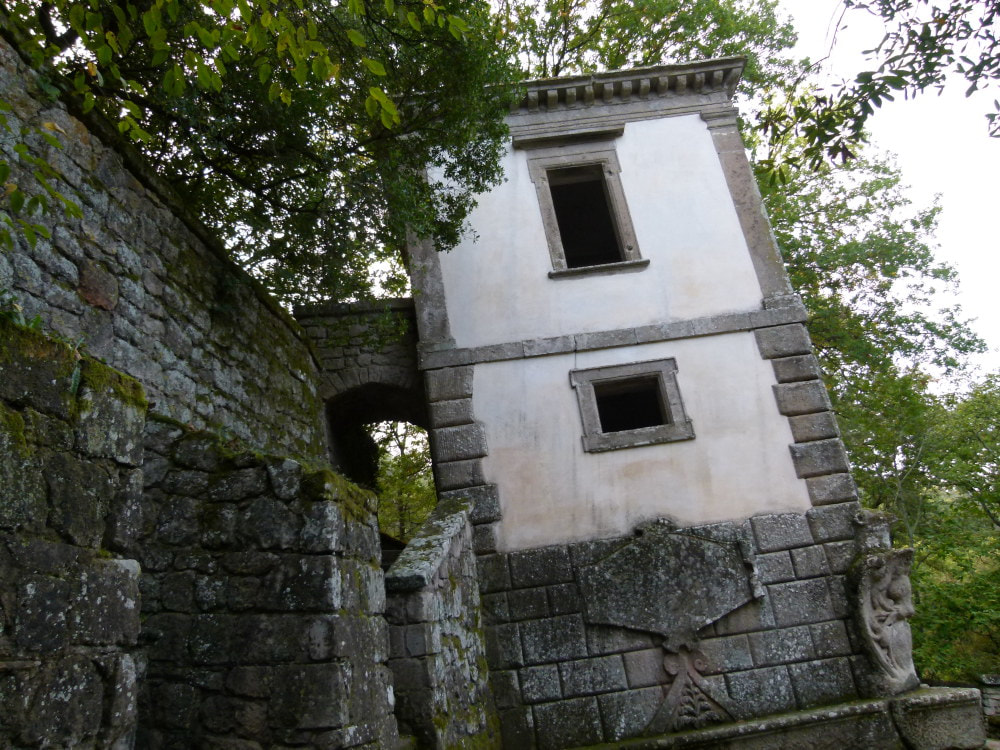
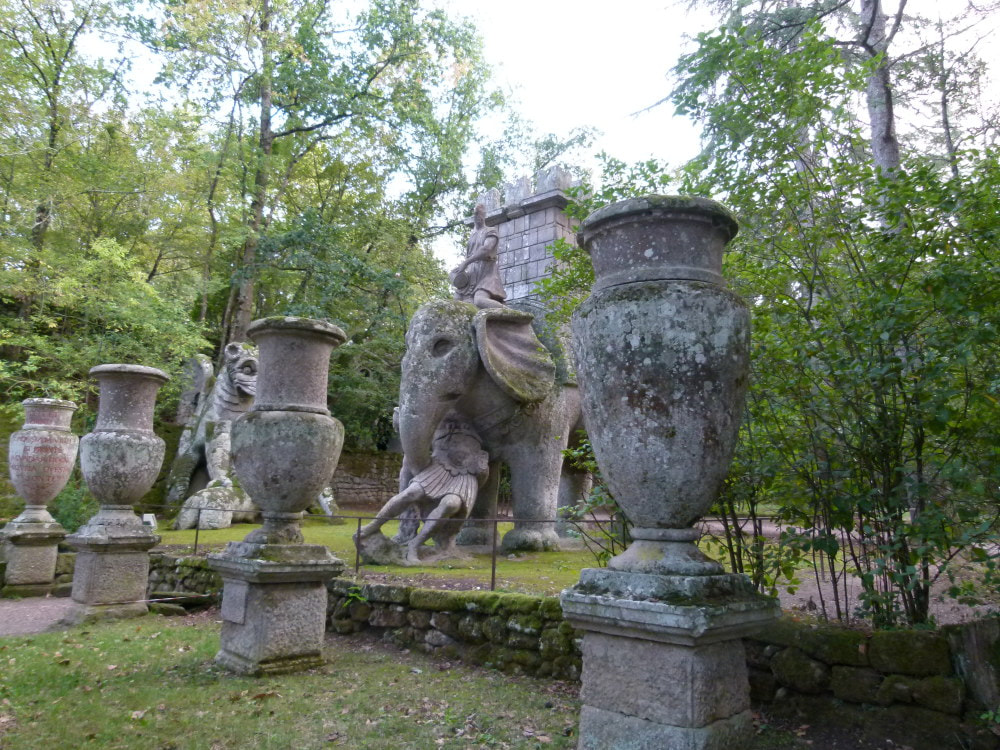
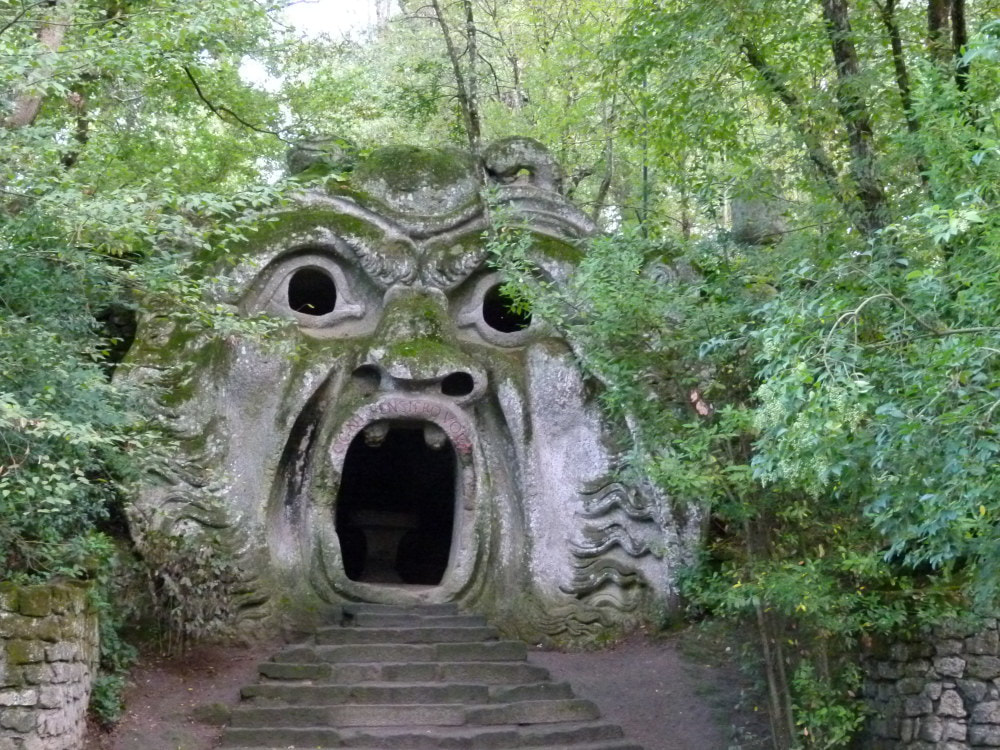

However, all is not over. At the end of the gardens is another gaping mouth, this time a whale with a globe surmounted by a castle balanced uneasily on its head. Does this suggest that, to put it crudely, pride comes before a fall? Was Orsini in the grip of extreme PTSD? After his death, the gardens lay unnoticed until the 20th century, when the Surrealists ‘discovered’ them and they were the subject of a film made by Salvatore Dali.
Our final day was a return to sanity, with a visit to the recently open papal gardens at Castelgandolfo and to the Villa Landriana. Castelgandolfo is a majestically peaceful garden built over the remains of Domitian’s summer palace. Terraced gardens, largely recreated in the 1920s and 1930s look outwards. There are shaded areas beside a row of Roman fountains where Camellia sasanqua were flowering profusely and, below, tall yew hedges, clipped holm oaks, art-deco mosaic work and a recreated parterre with vivid bedding on the site of the hippodrome. Sadly, the nearby Vatican farm is not open to the public, but there is a magnificent cryptoporticus to see, at 150 metres a shadow of its former 300 metres, within which locals sheltered from Allied bombs. A small museum houses some excellent finds, including the only known complete statue of the lion-headed Mithraic god Chronos.
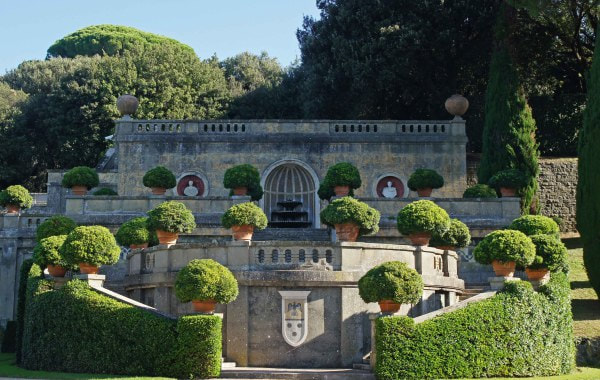
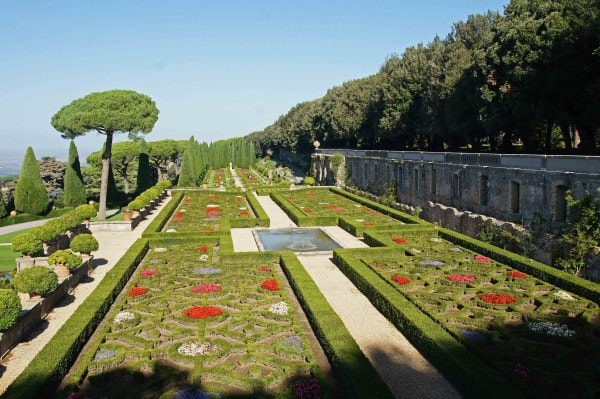
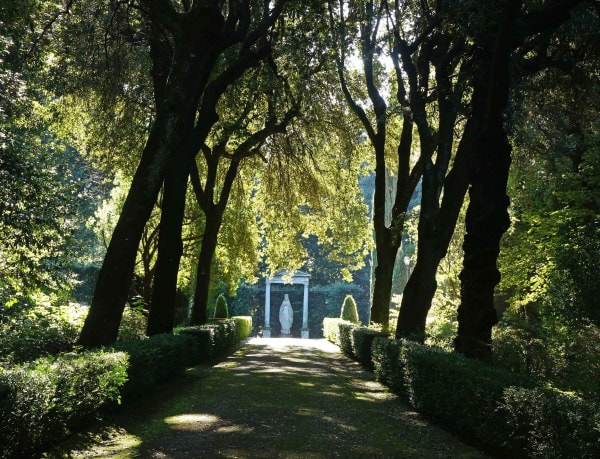
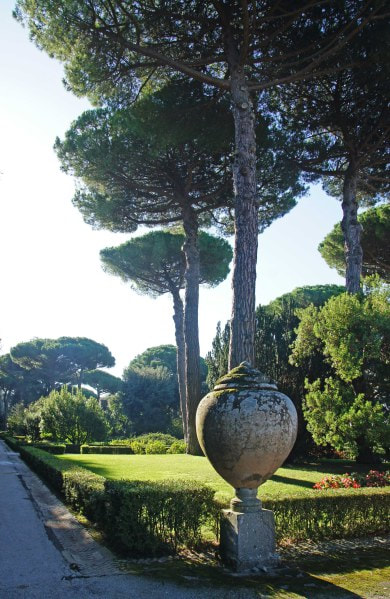
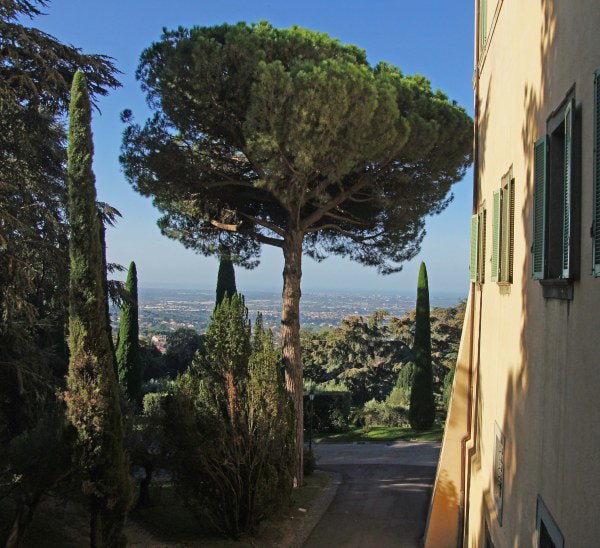
Moving on, we lunched excellently at the Villa Landriana before beginning the in-depth tour. This garden represented a return to the present. Created from the 1940s by the Marchesa Lavinia Taverna in conjunction with the designer Russell Page on the site of a wartime minefield, it opens with a very striking grey garden, with olives pruned into candelabra shapes underplanted with all that one thinks of as drought resistant and scented: there is Elaeagnus ebbingei, Teucrium, lavender, Westringia, Tulbaghia, Cistus salvifolius, Phlomis, Artemisia. Striking in autumn and probably equally so in the winter. Next comes an area of grass surrounded by blue plants: Agapanthus, blue Plumbago, hydrangeas both macrophylla and quercifolia, roses, Clerodendrum, Ceratostigma and Stewartia. The garden progresses in a series of formal and informal areas, several of which appear to have been or are still under restoration – all of this work done by five permanent gardeners with additional seasonal help. Rosa ‘Mutabilis’ appears here too in quantity, there is a lake, a Spanish garden and many pots and clipped evergreens. At Landriana as at Ninfa and Torrecchia there are various magnolias – a magnificent specimen of grandiflora as well as delavayi, soulangeana and stellata.
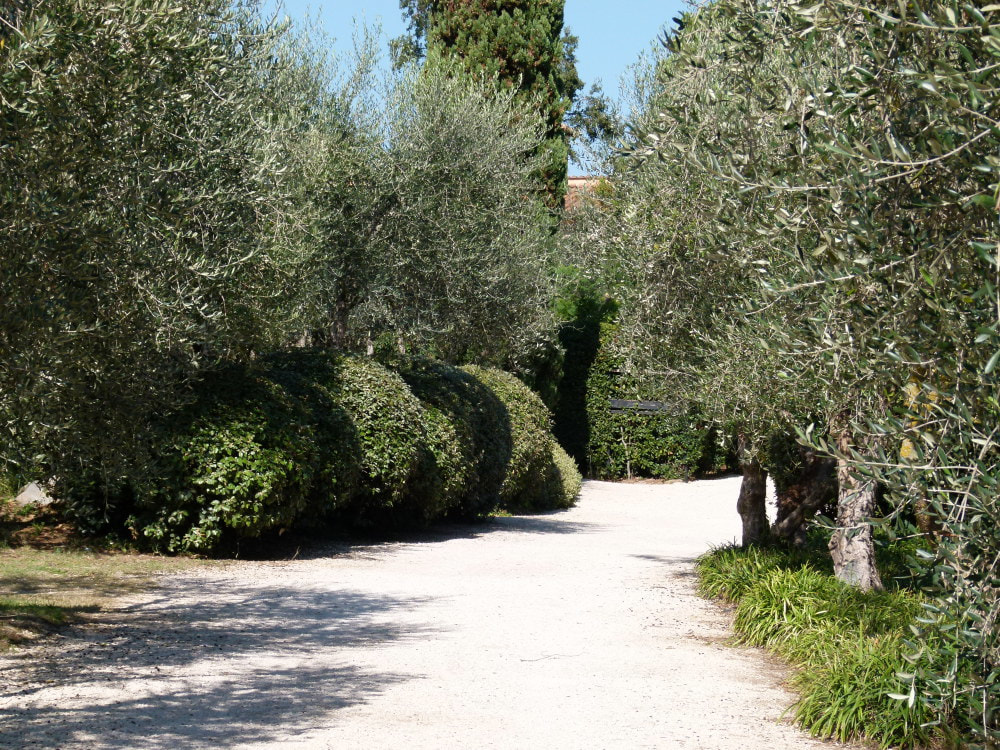
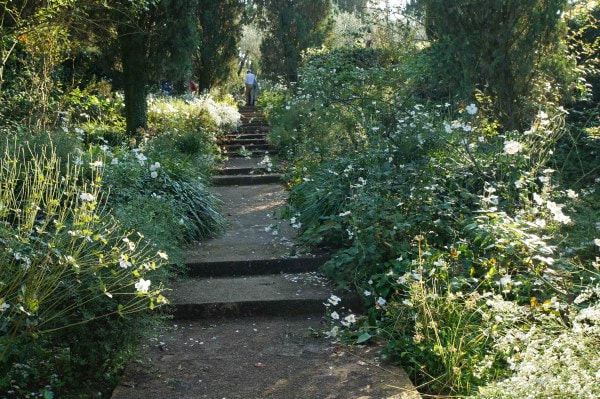
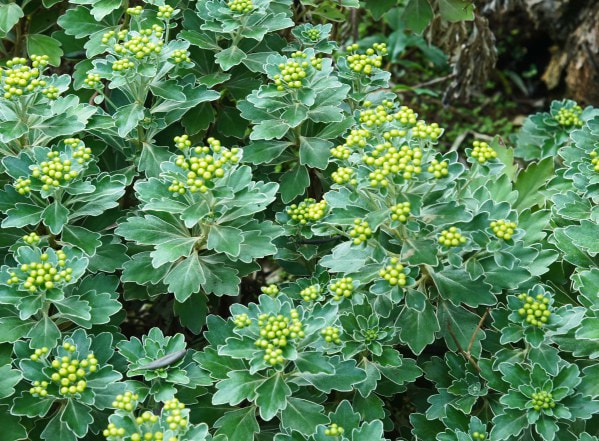
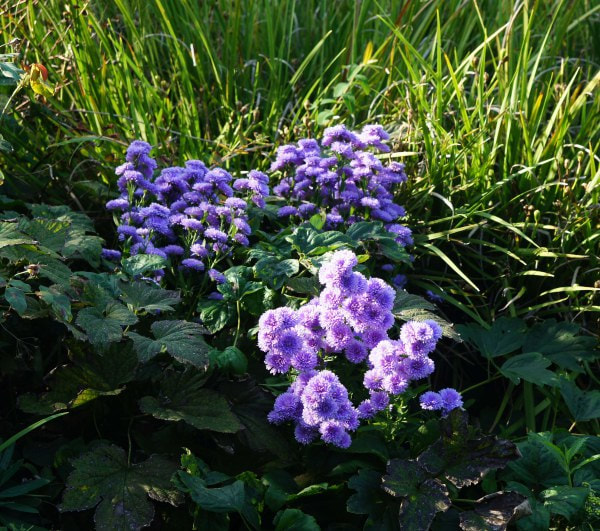
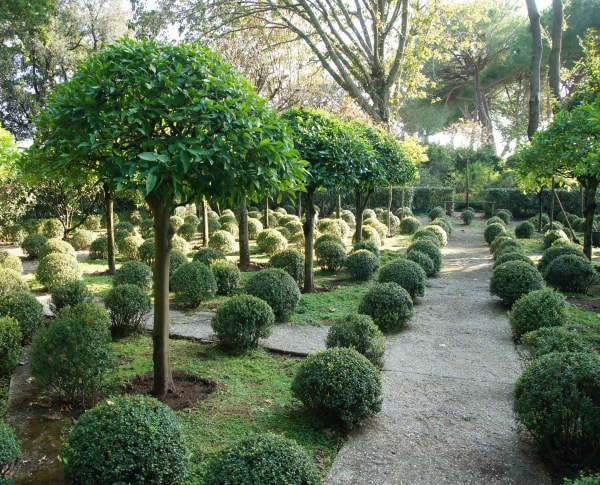
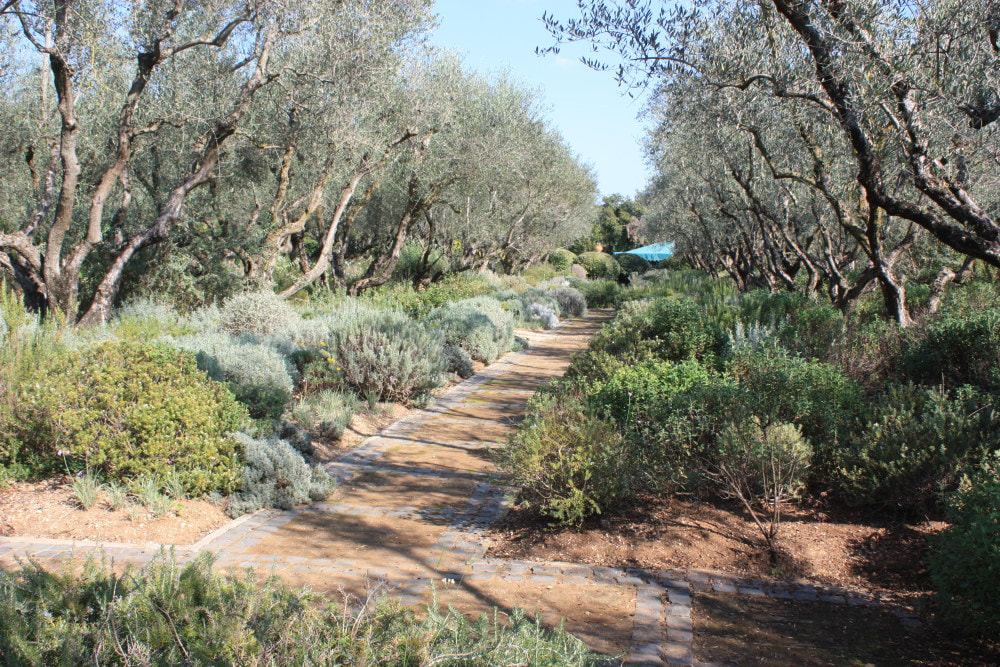
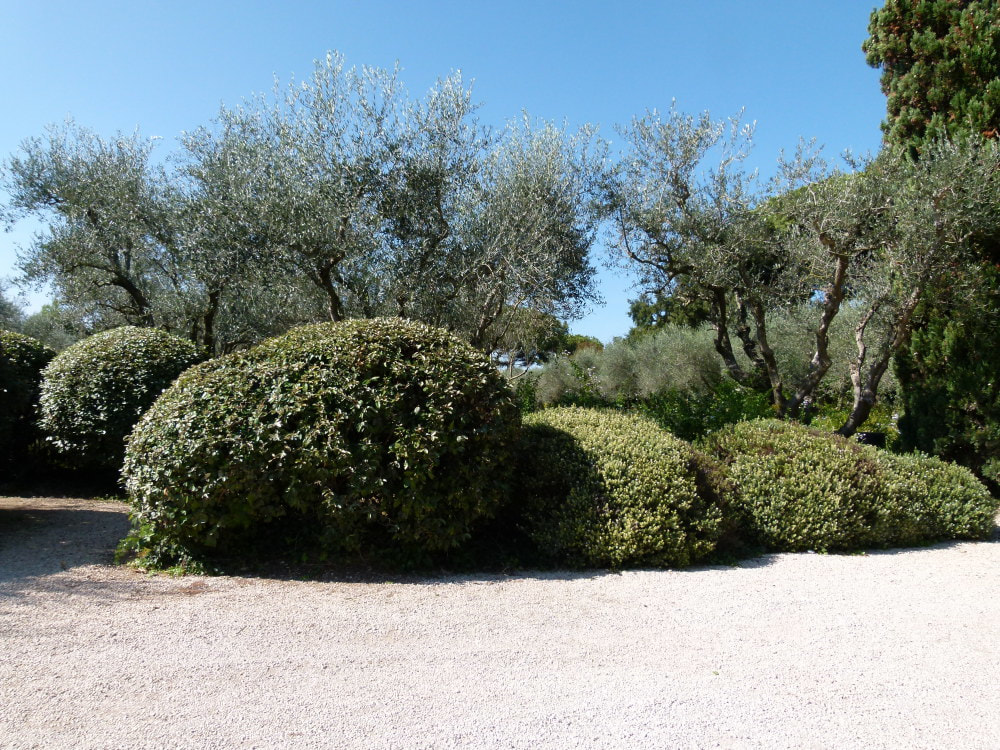
The white stairway, planted with anemones, Gaura, Plumbago, a fine white Aster ‘Monte Cassino’ and repeat plantings of roses including again the ever-reliable ‘Madame Alfred Carrière’, ‘Penelope’ and ‘Sea Foam’, was still going strong, as was the olive garden, which is planted with late summer flowers in mauve and yellow shades. Finally, there is a very fine hedge of Acca sellowiana. Our long day ended, we returned to a send-off dinner at the Ristorante Cacciani in Frascati before separating to go our separate ways the following morning.
Celia Jones
Images: Guy Cheeseman; Anne Keenan; Stephen Jury
All Guy’s beautiful photographs can be viewed on Flickr – Click on ‘Lazio’ and then the monitor icon.

